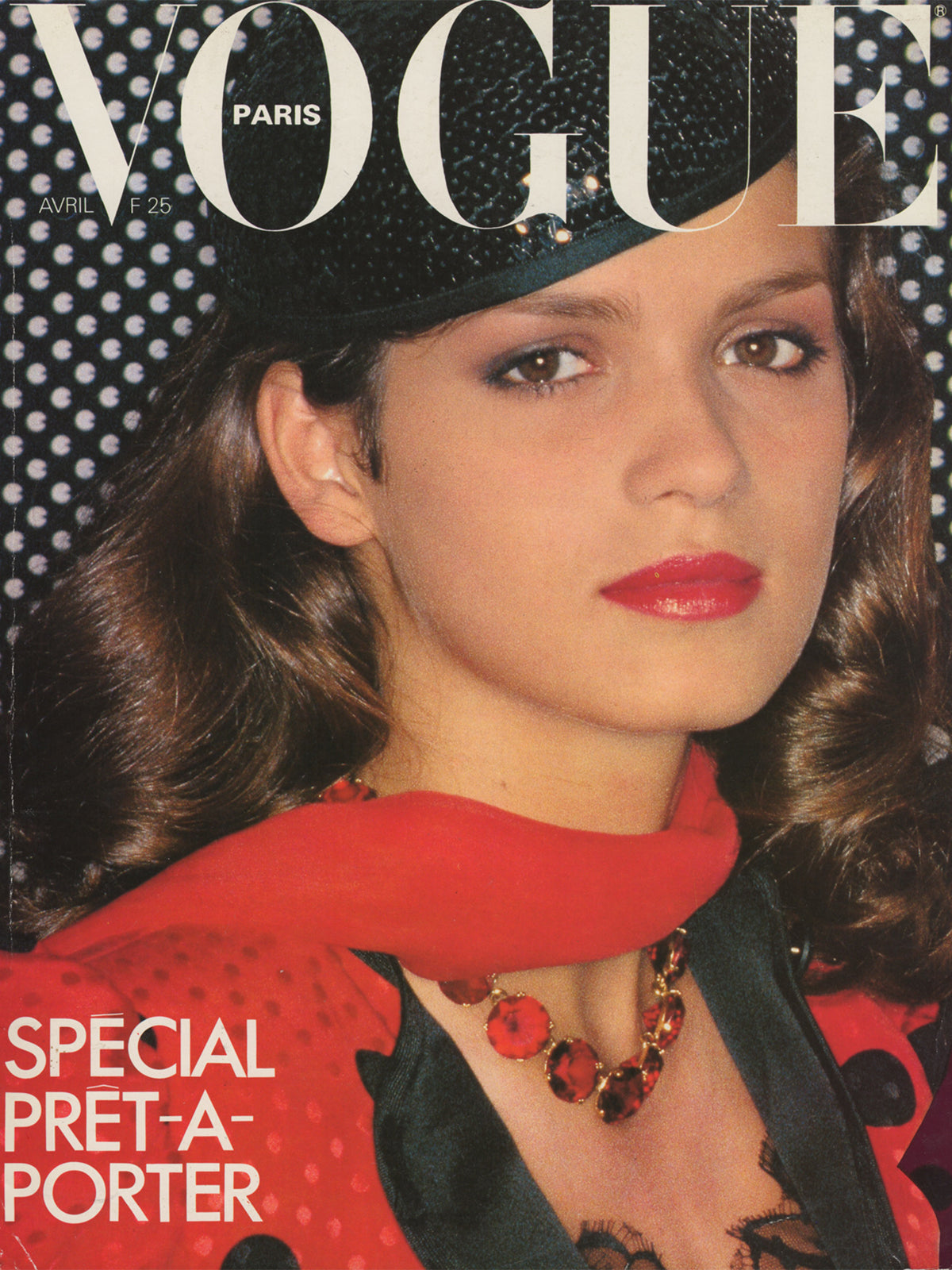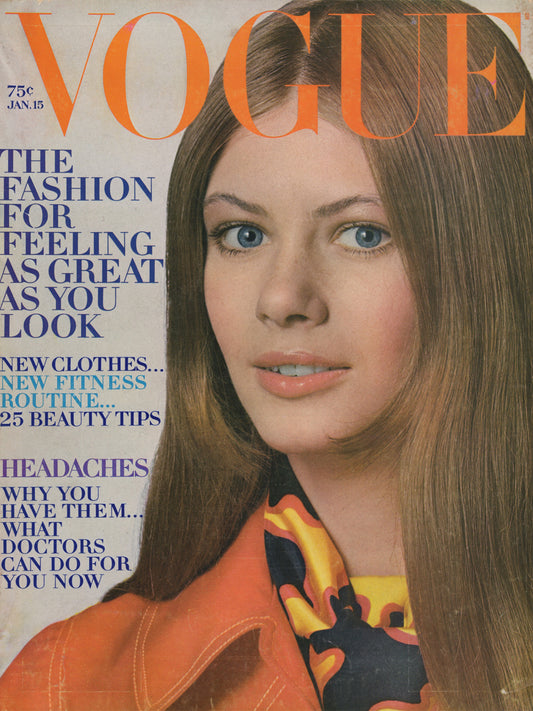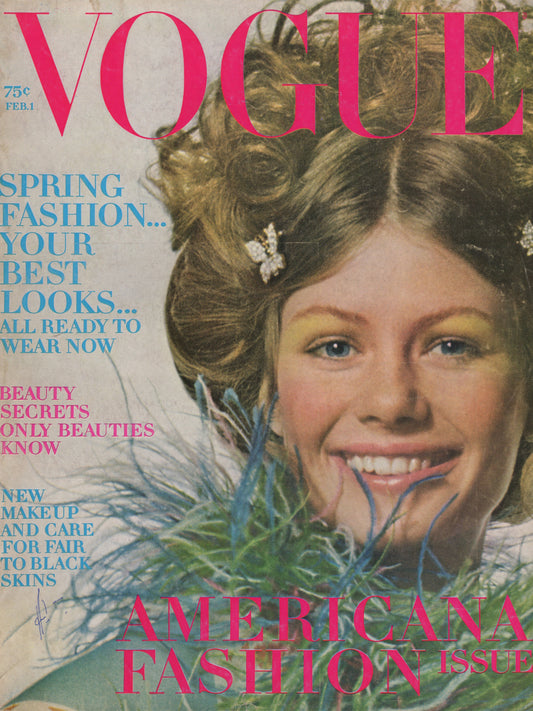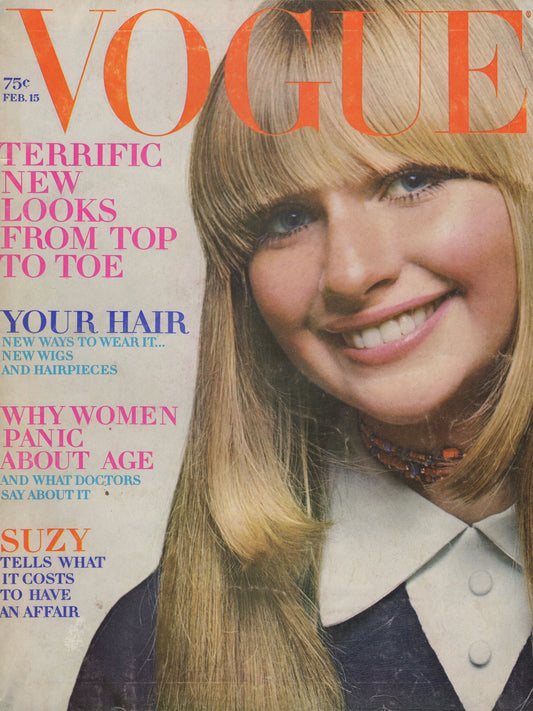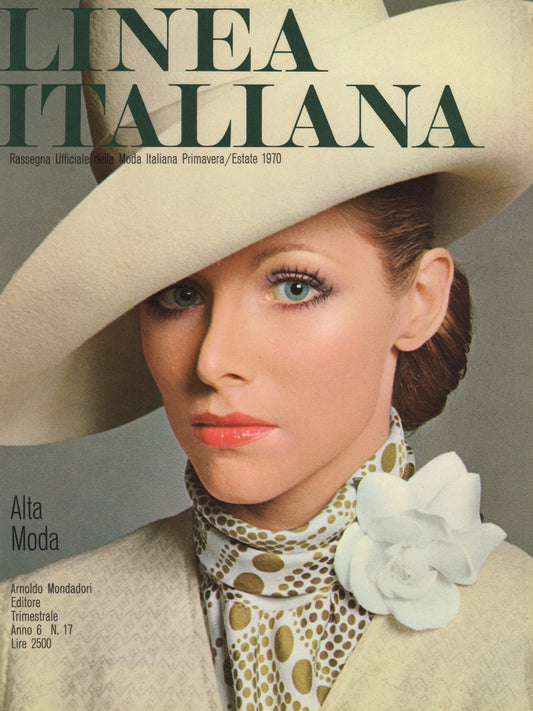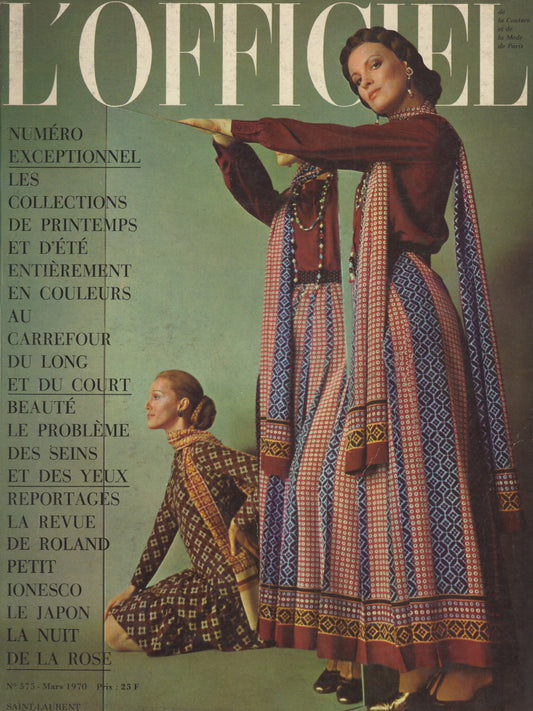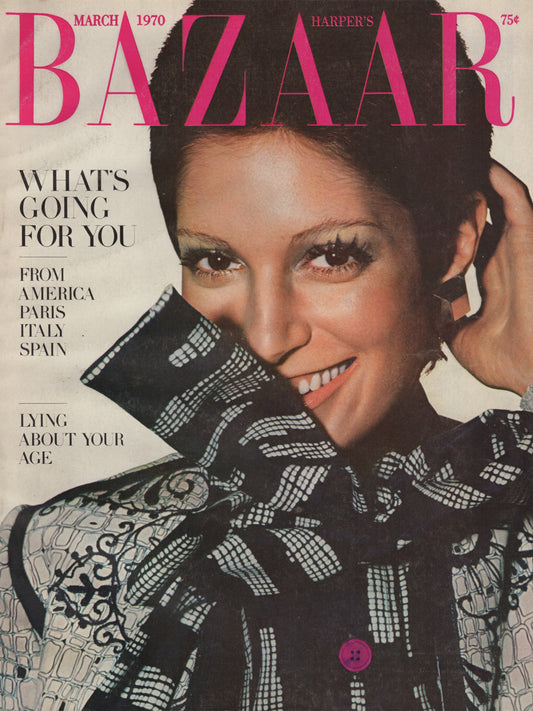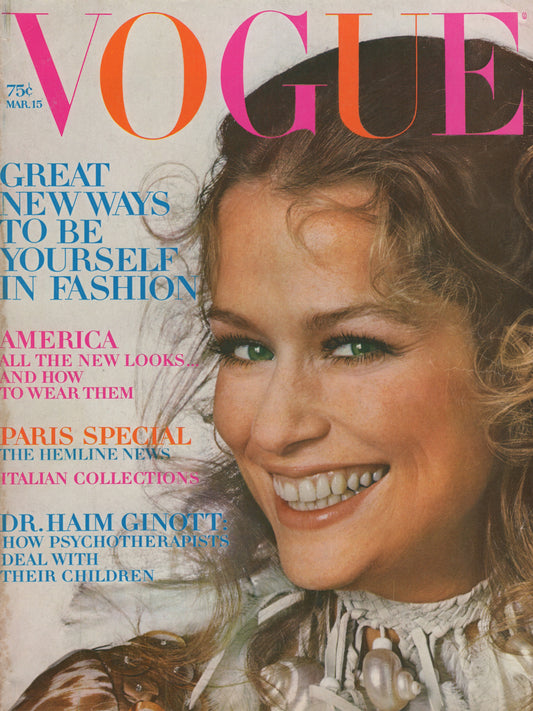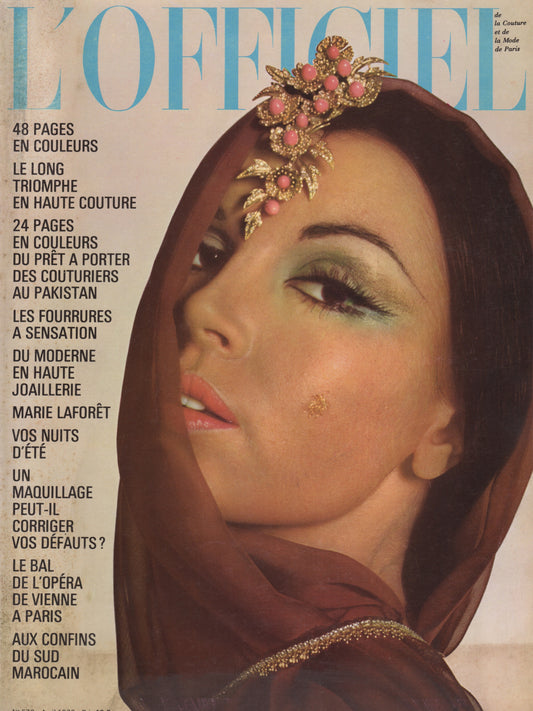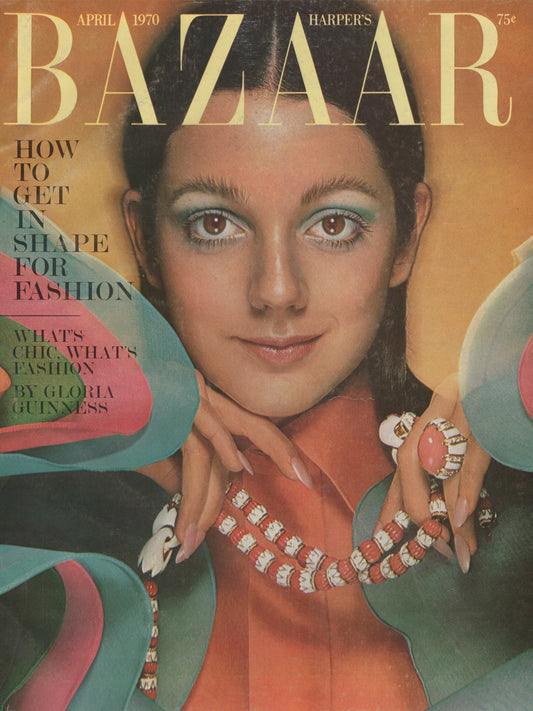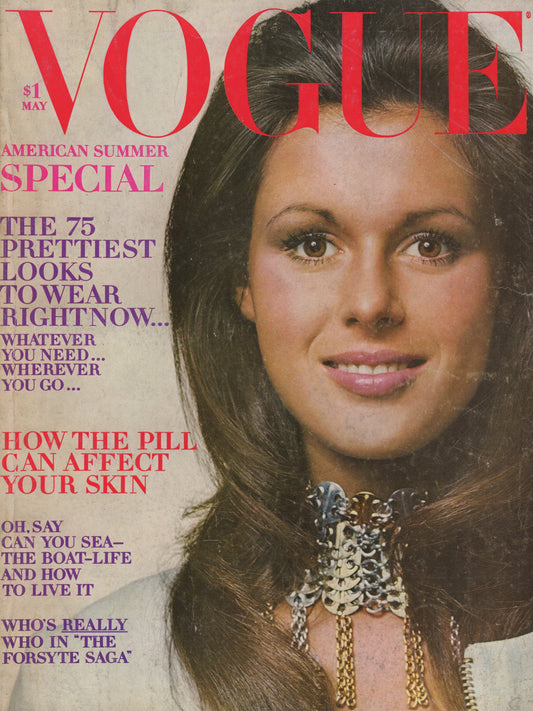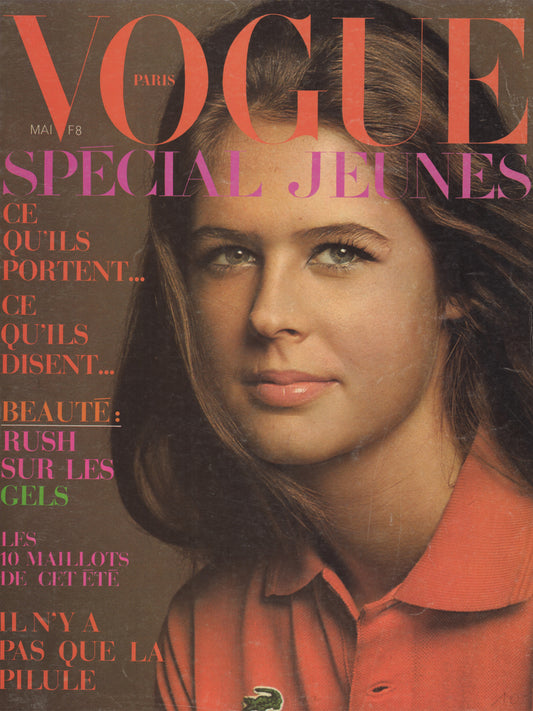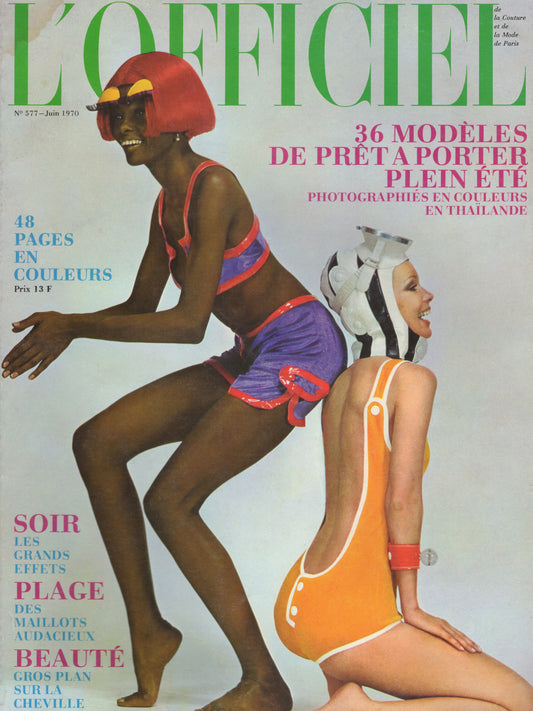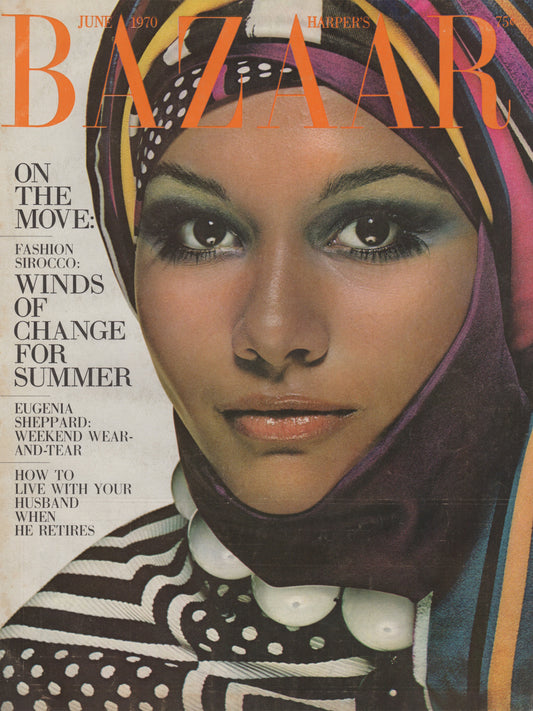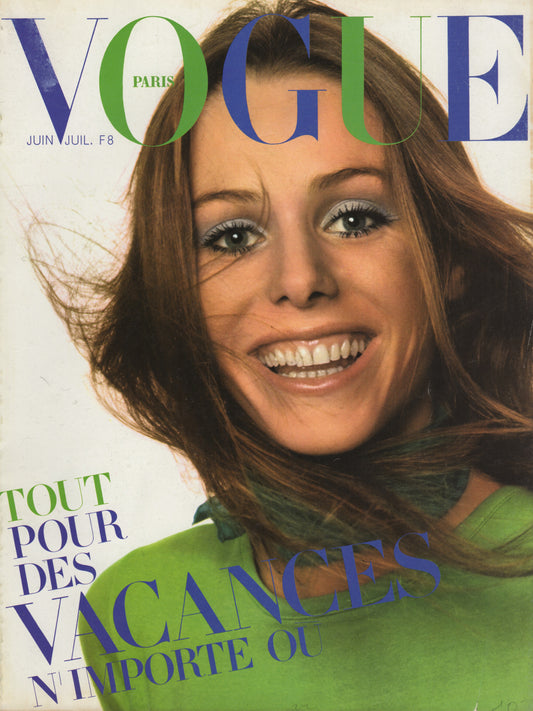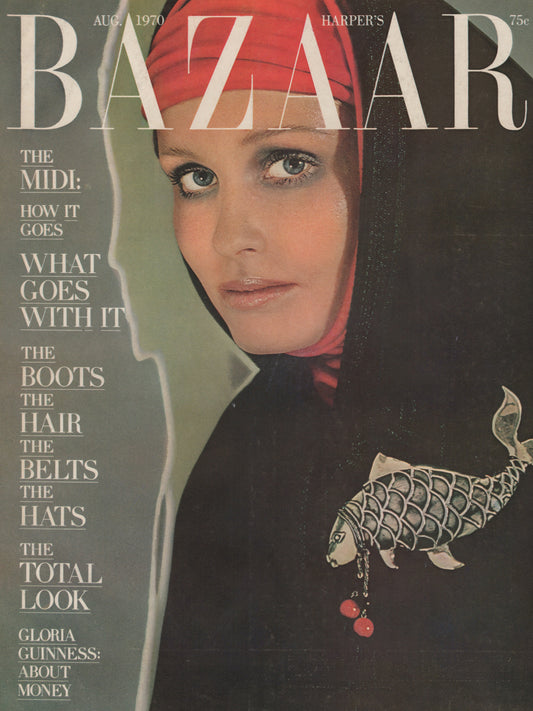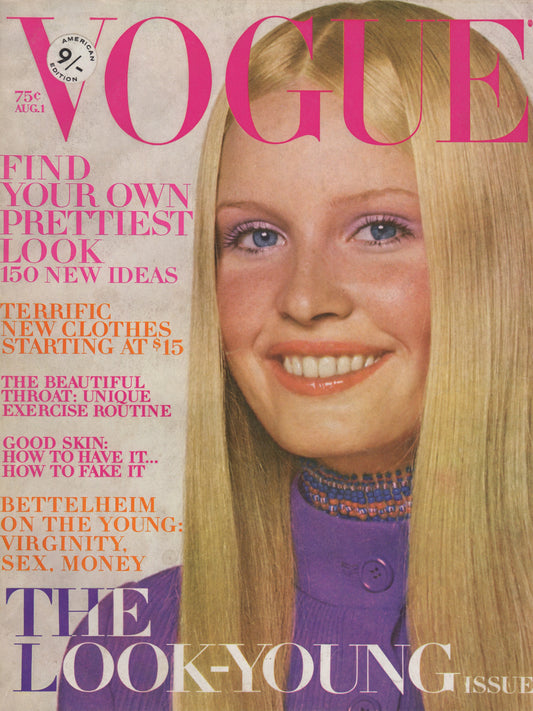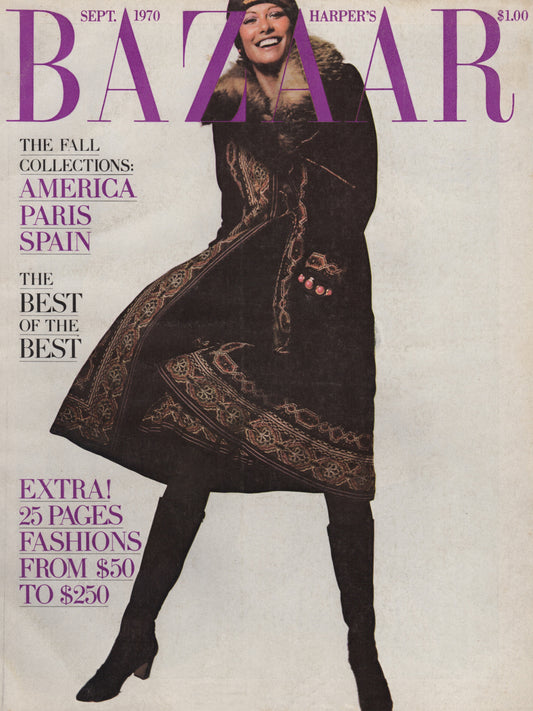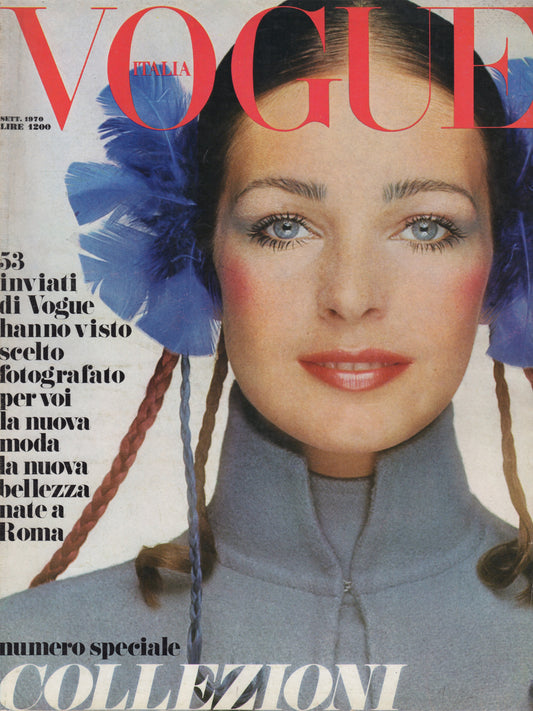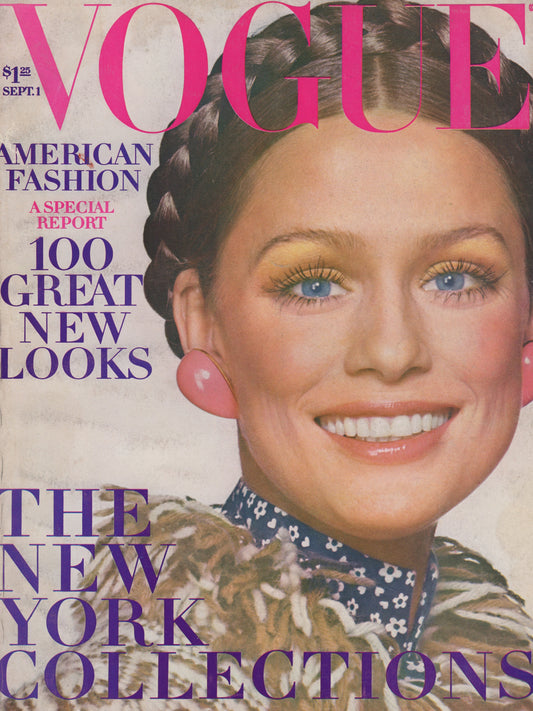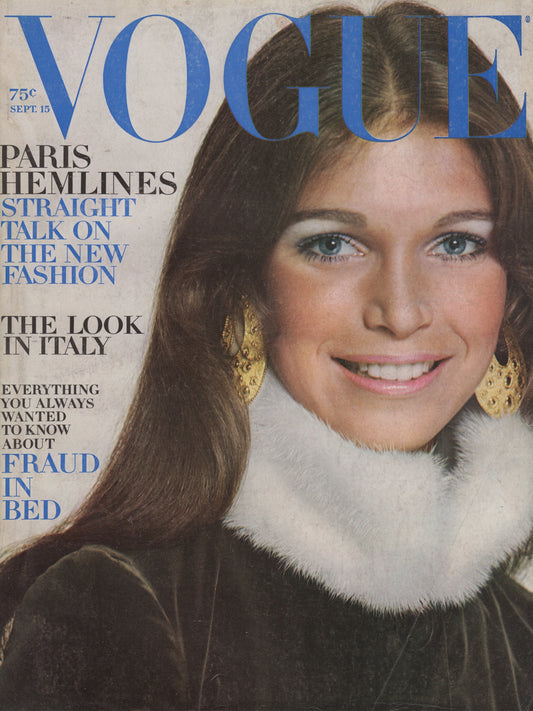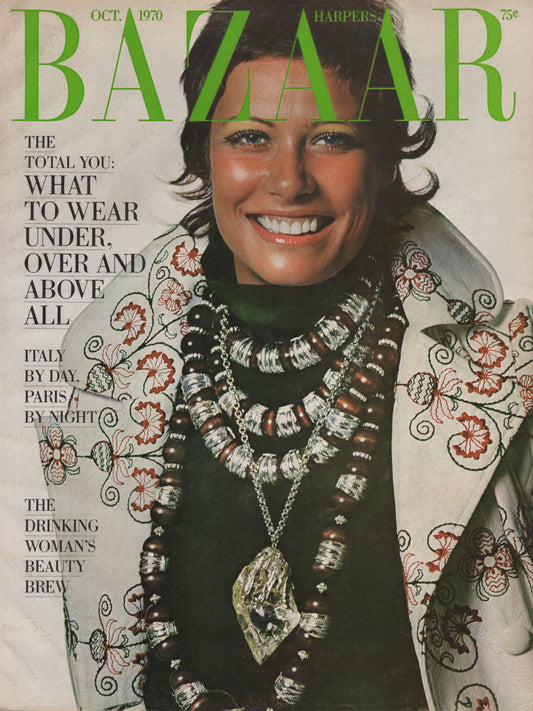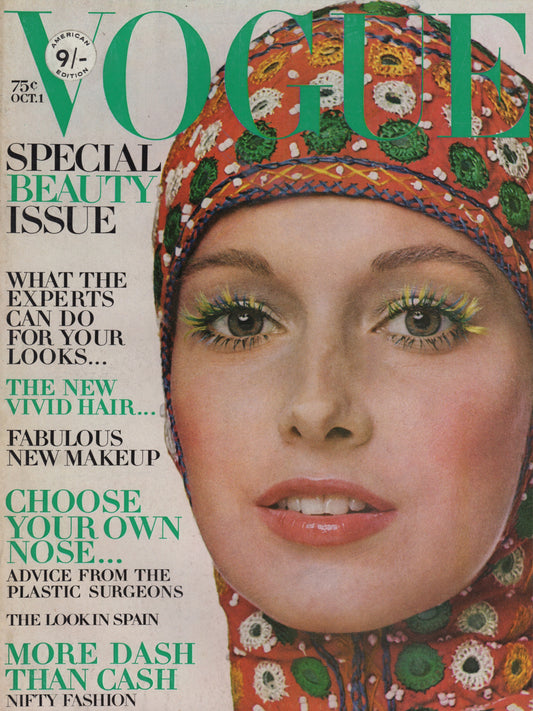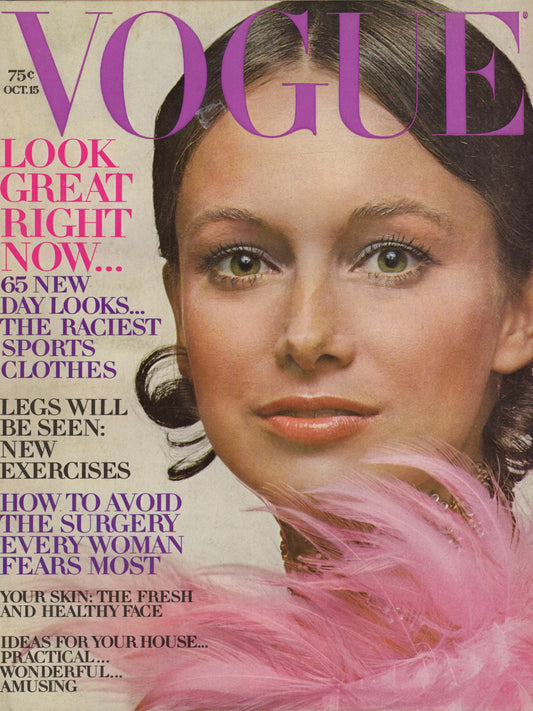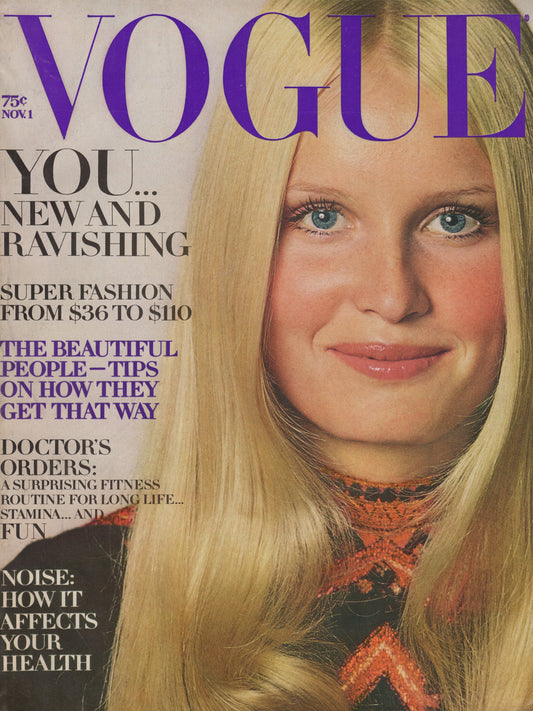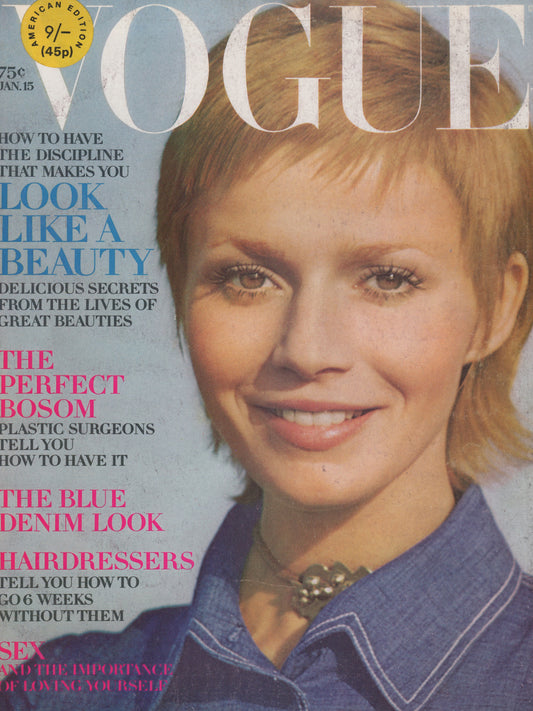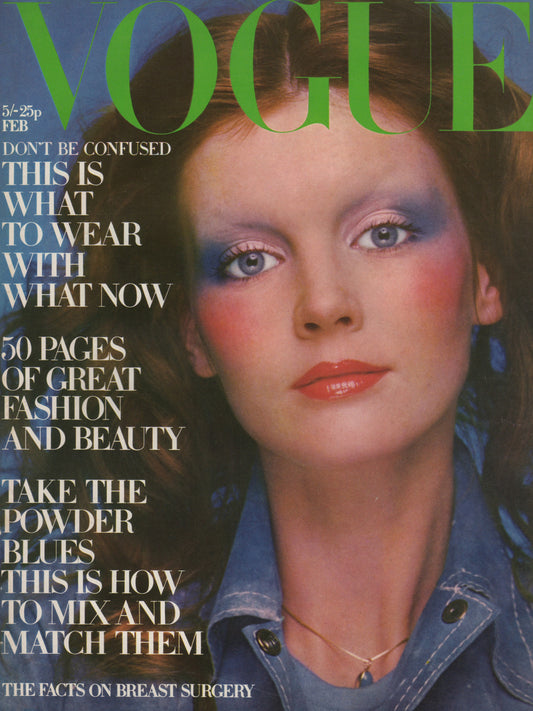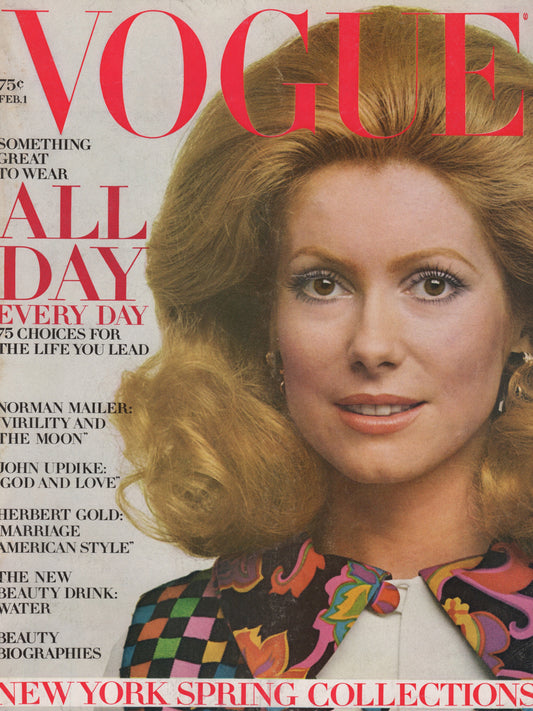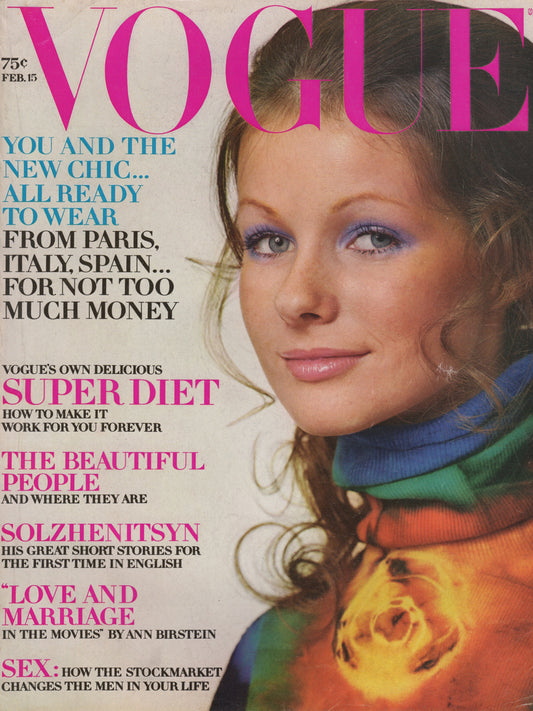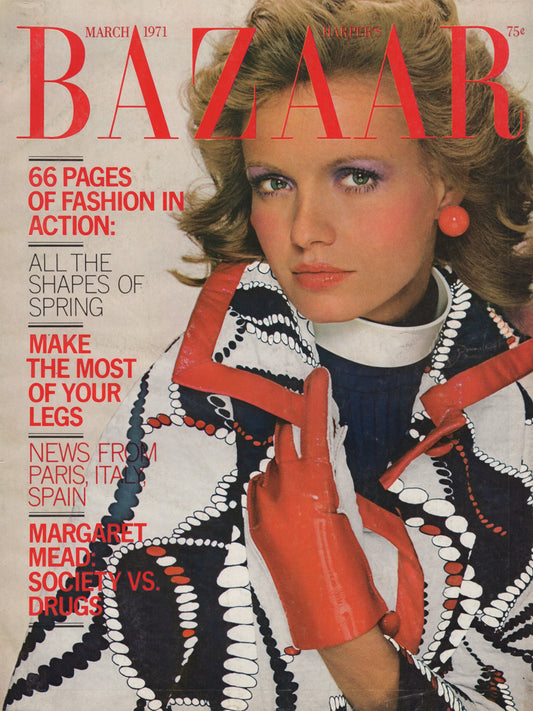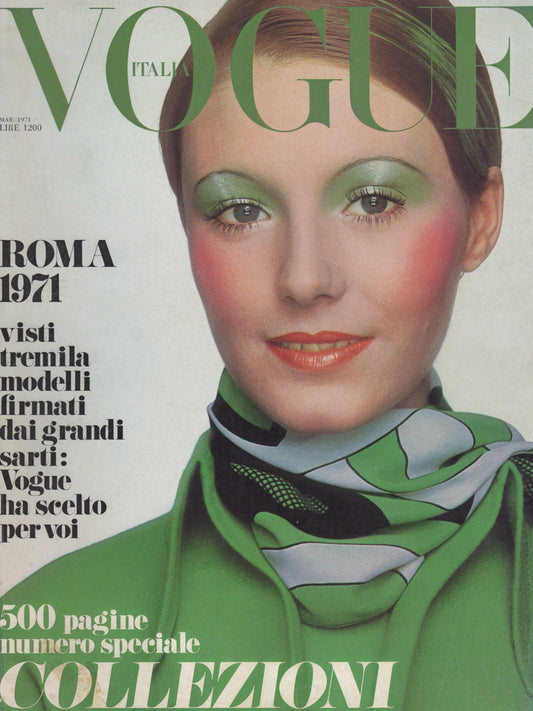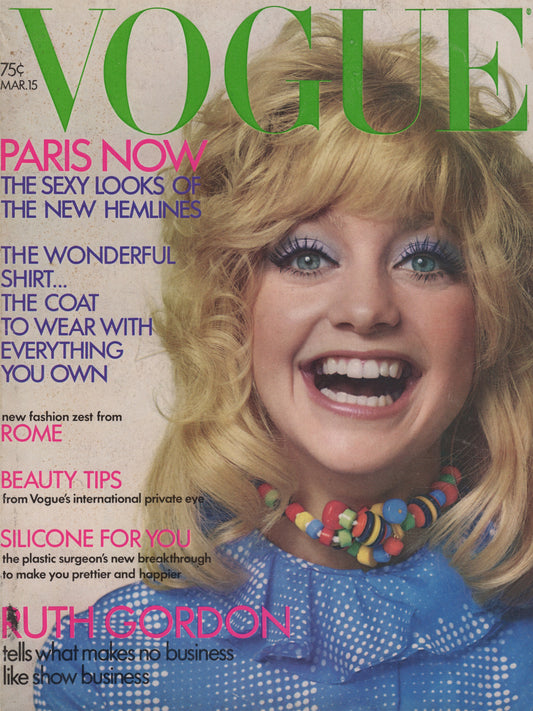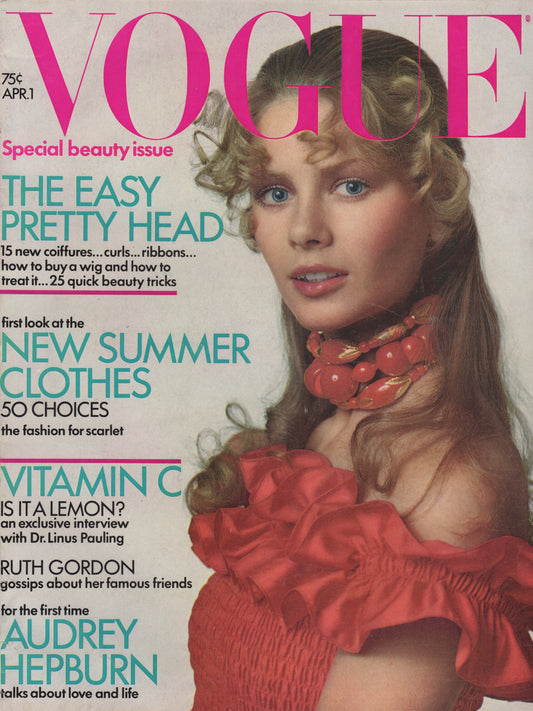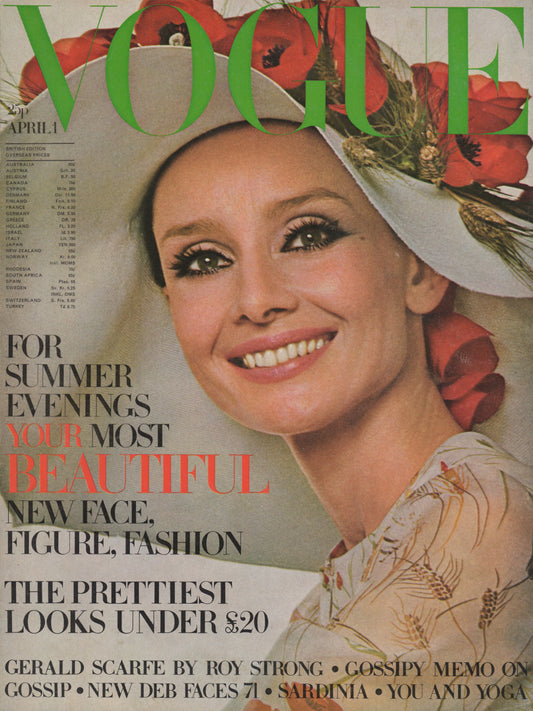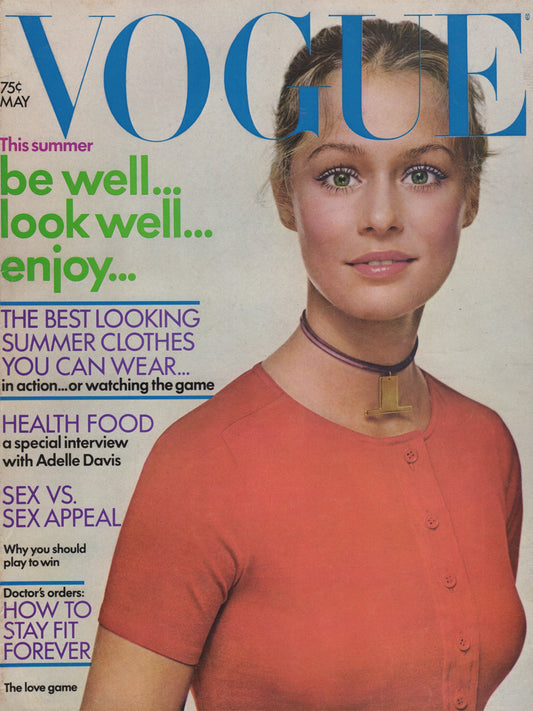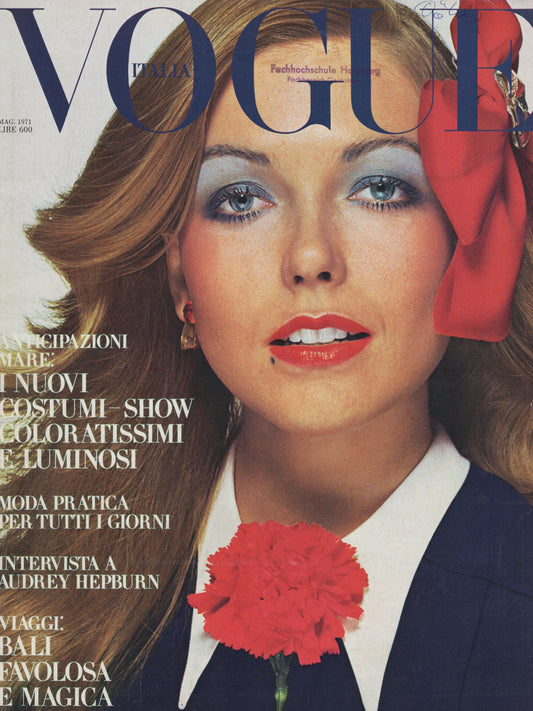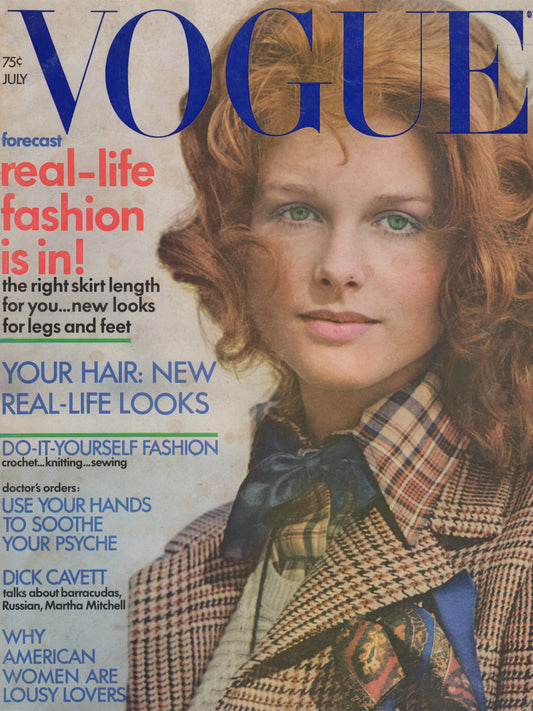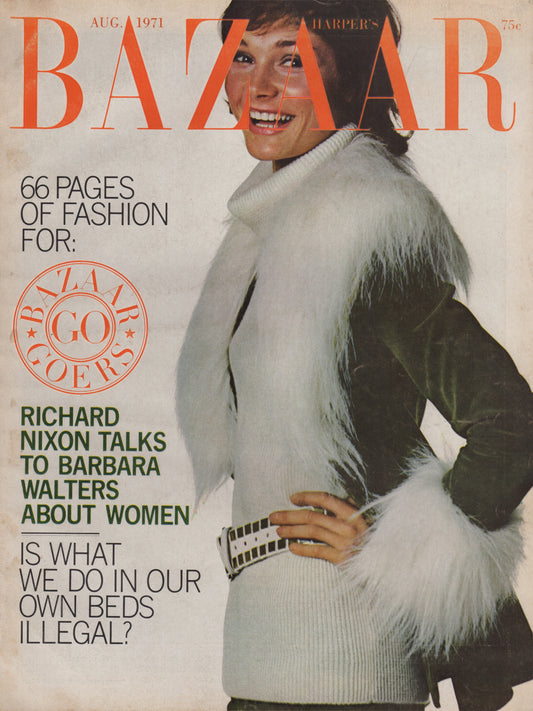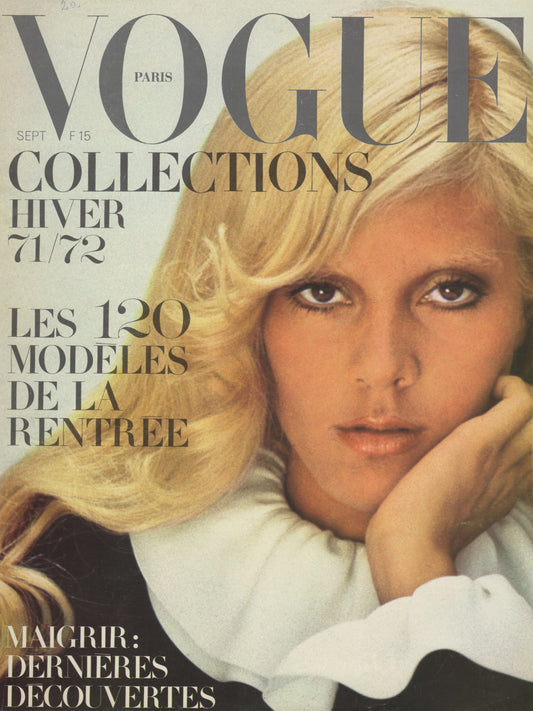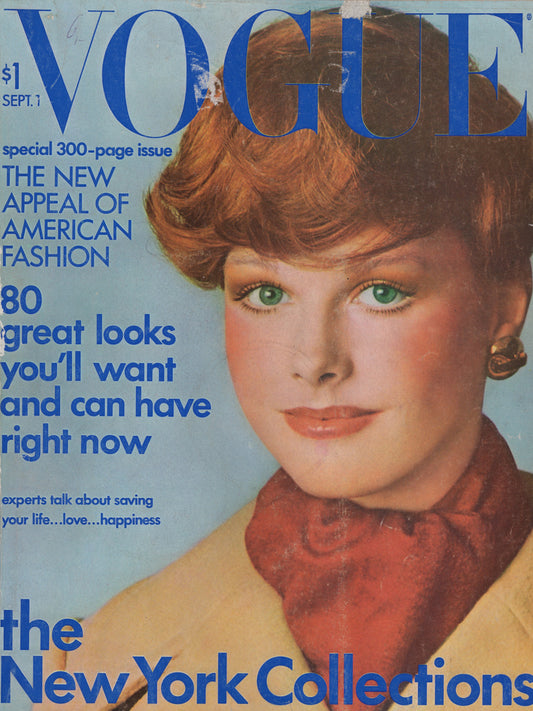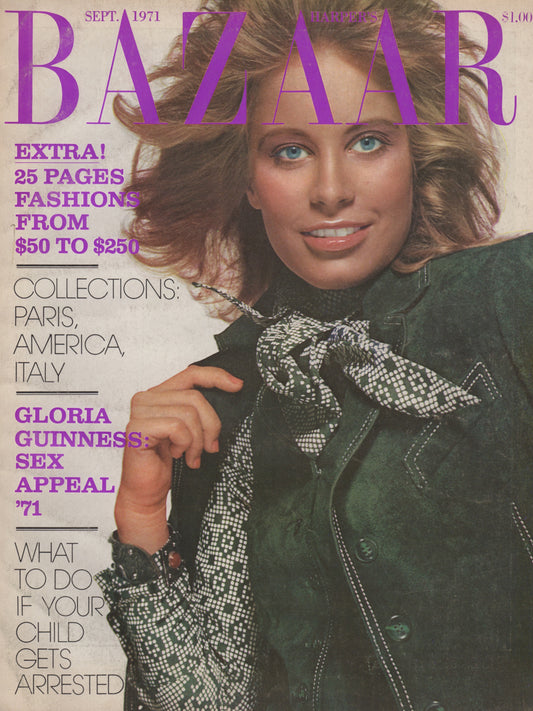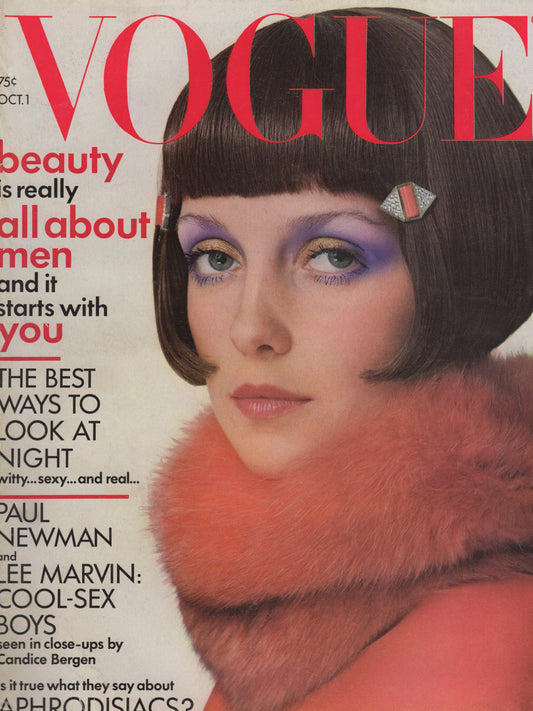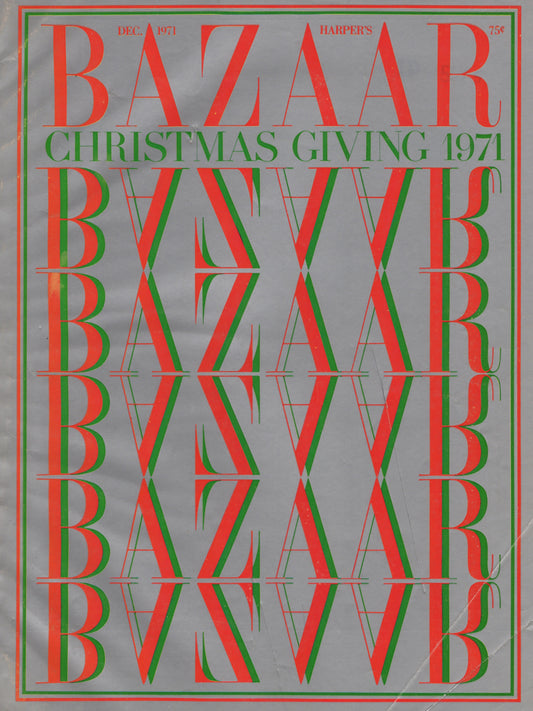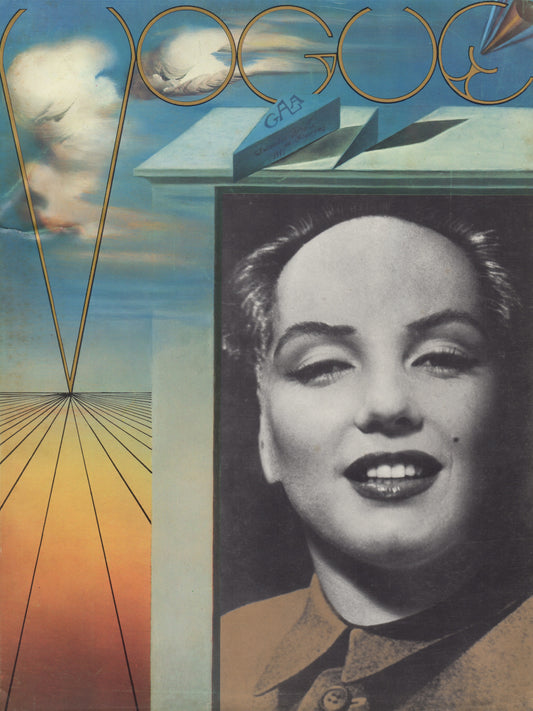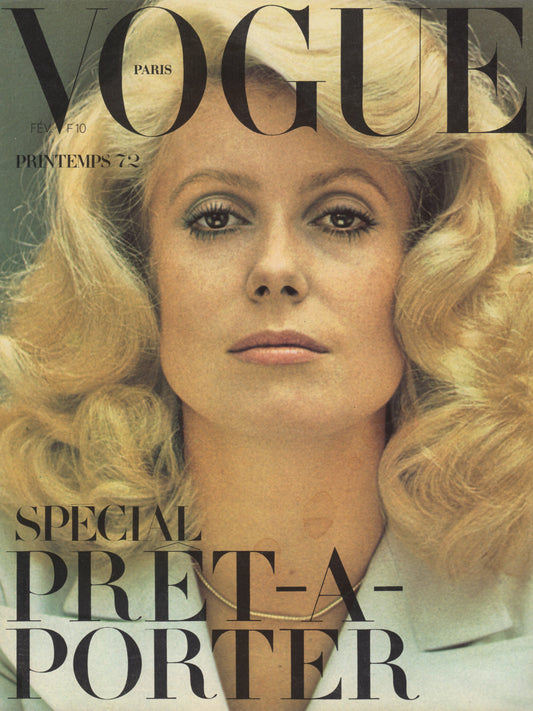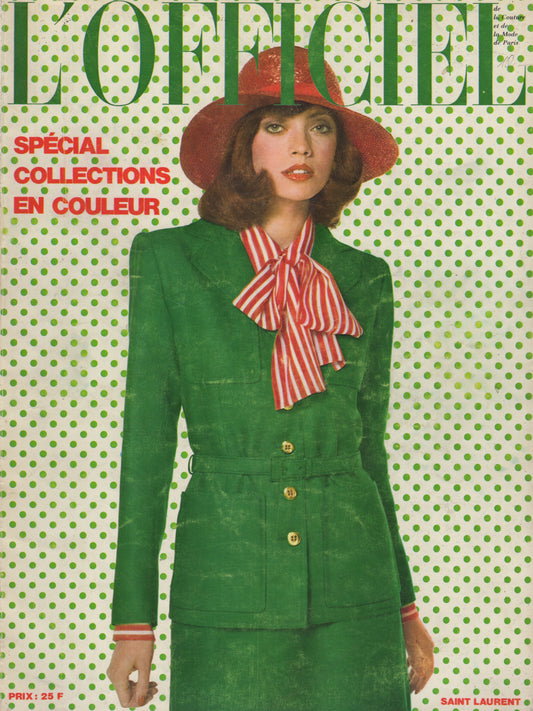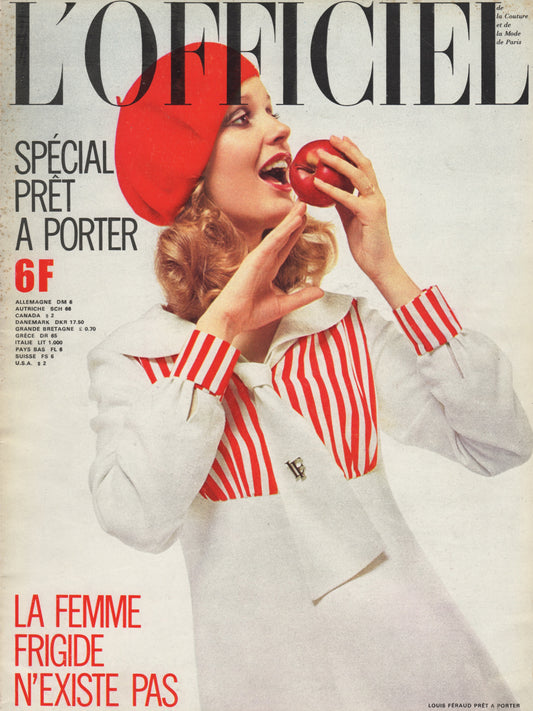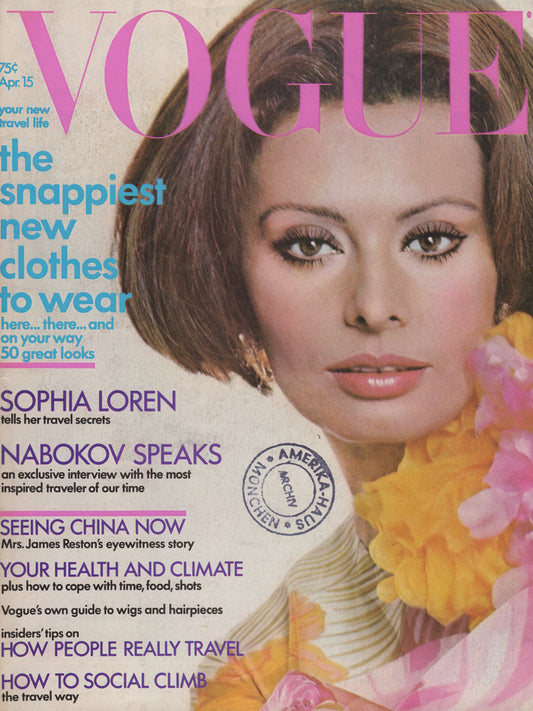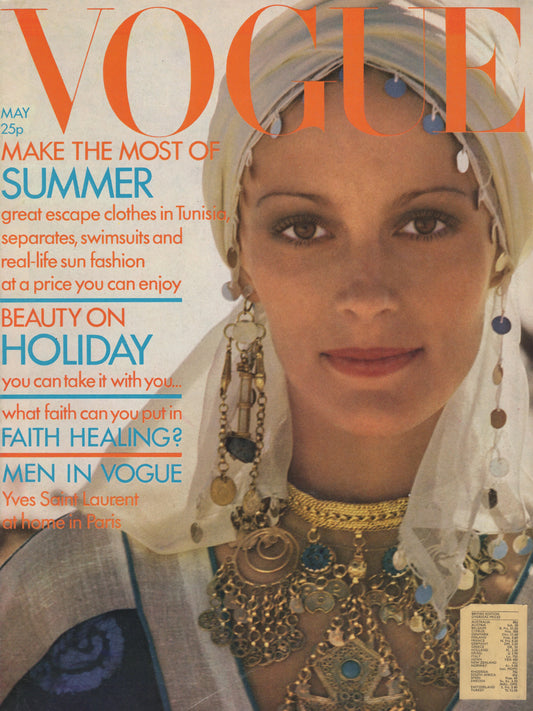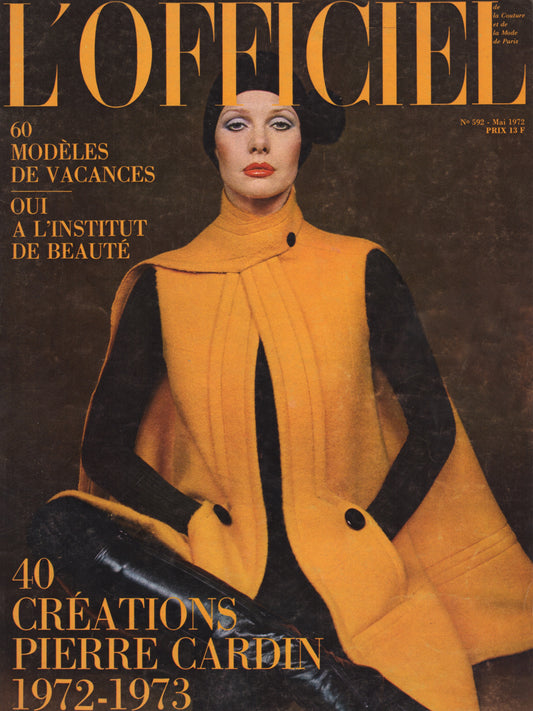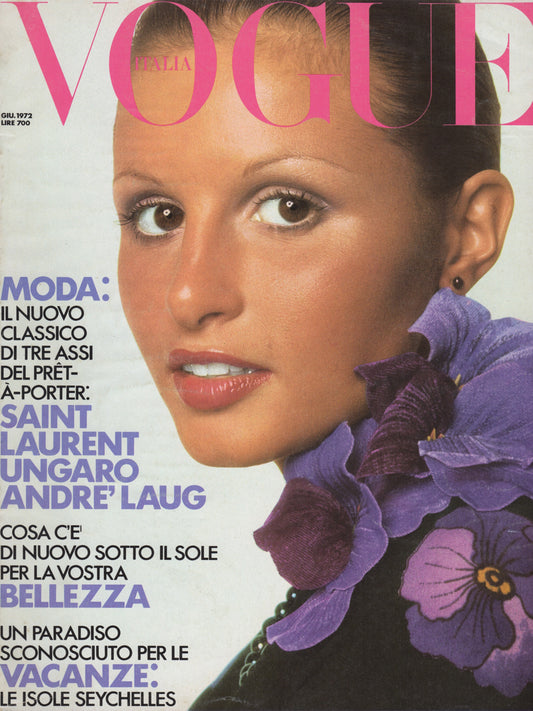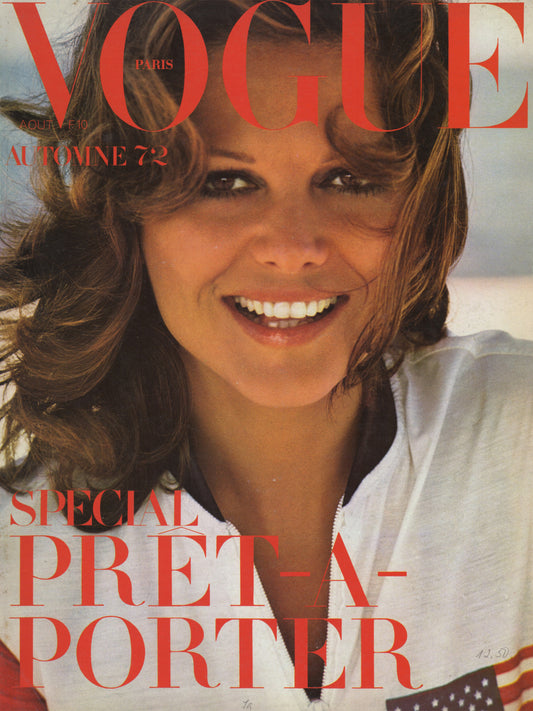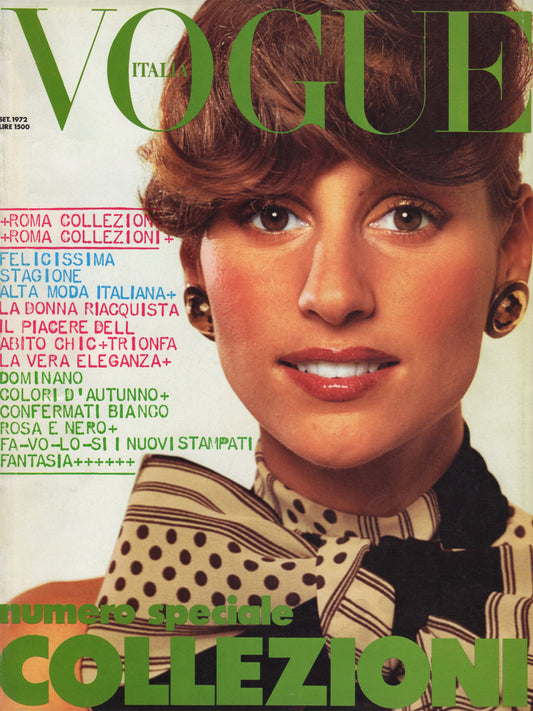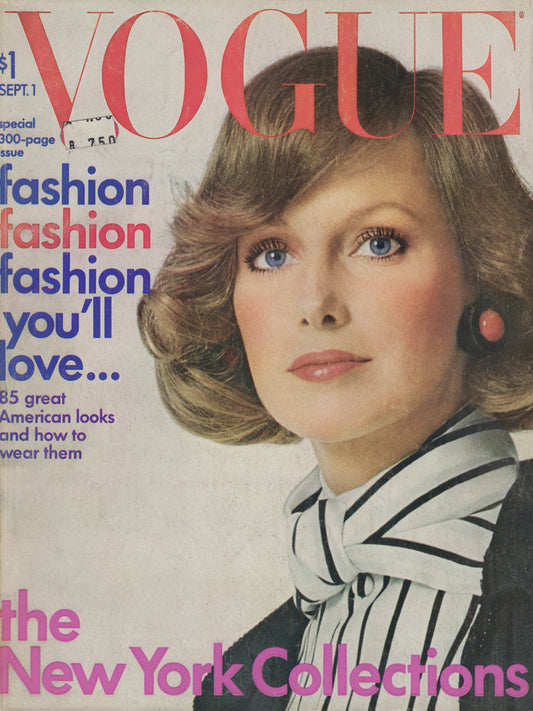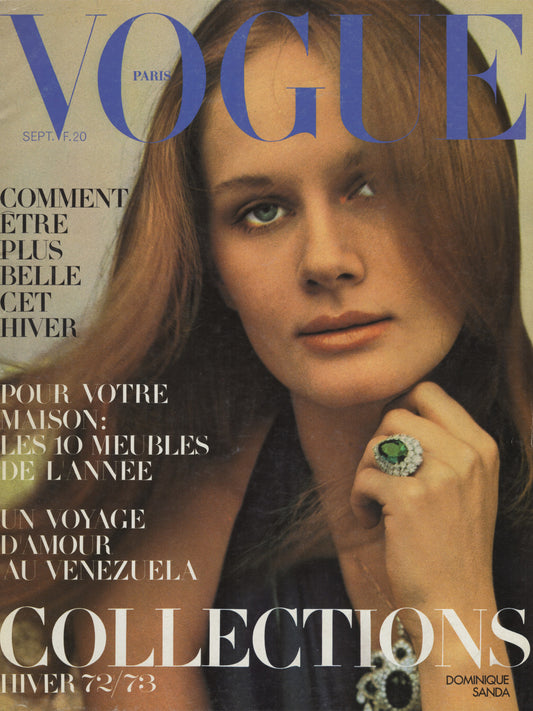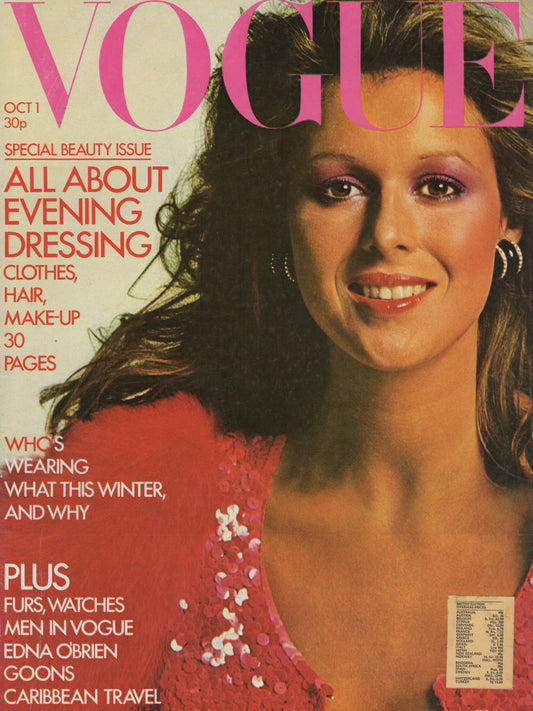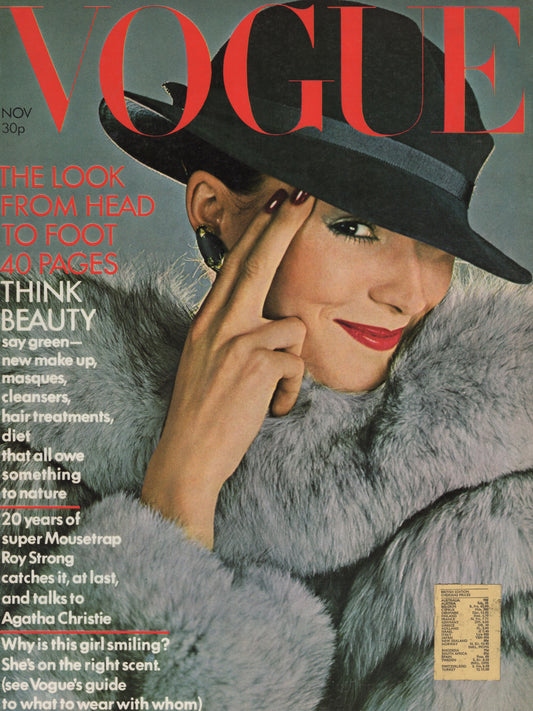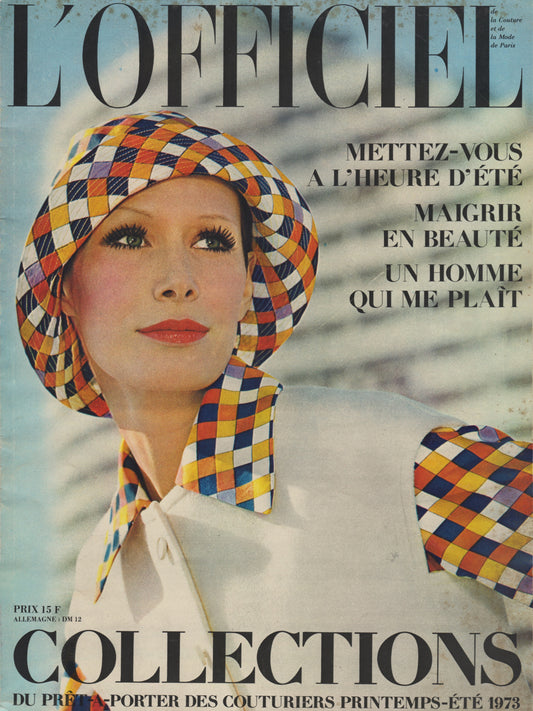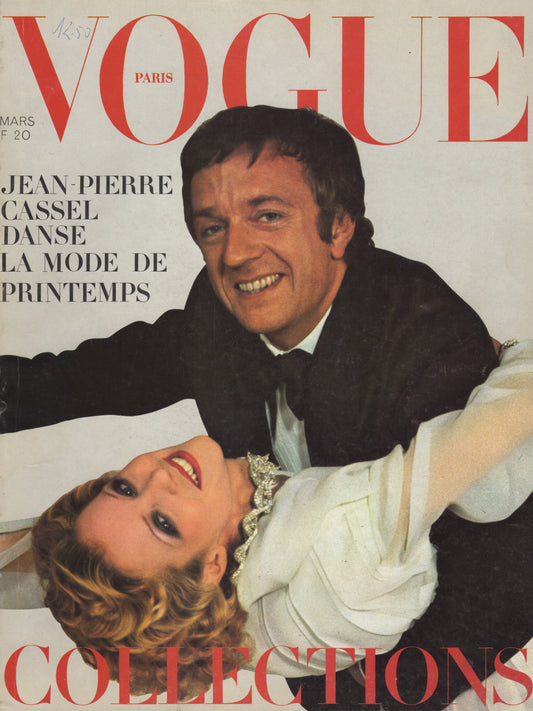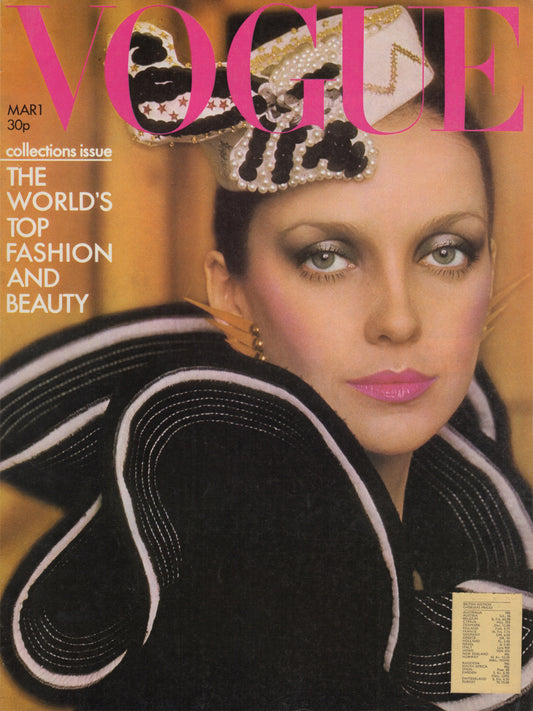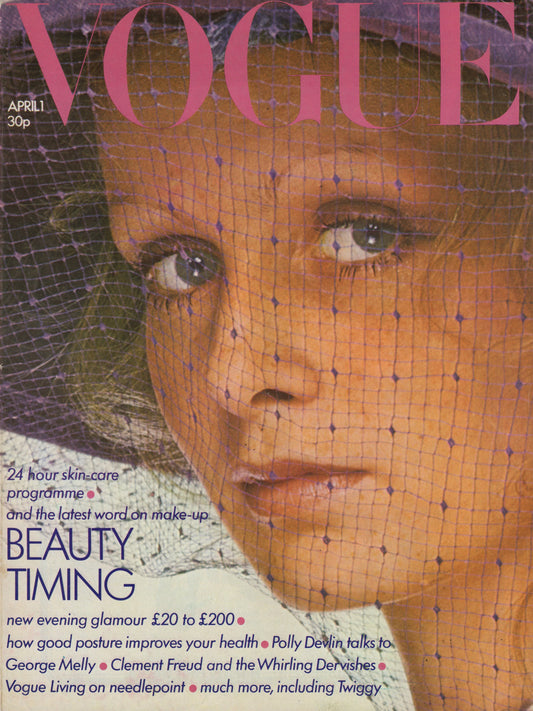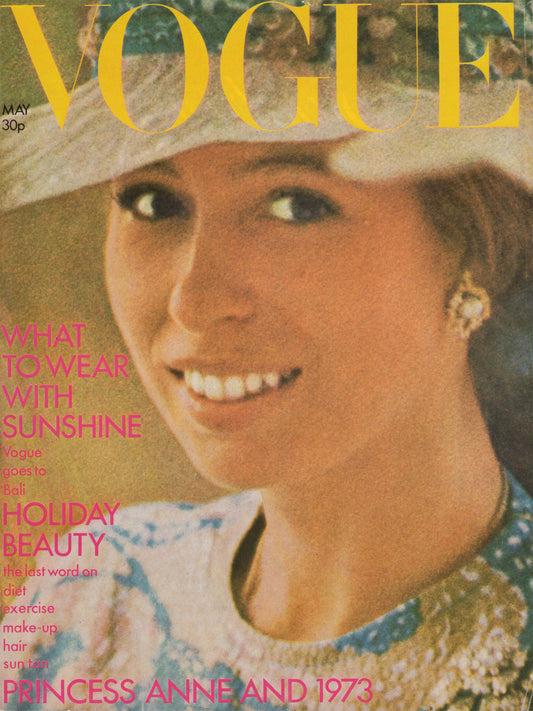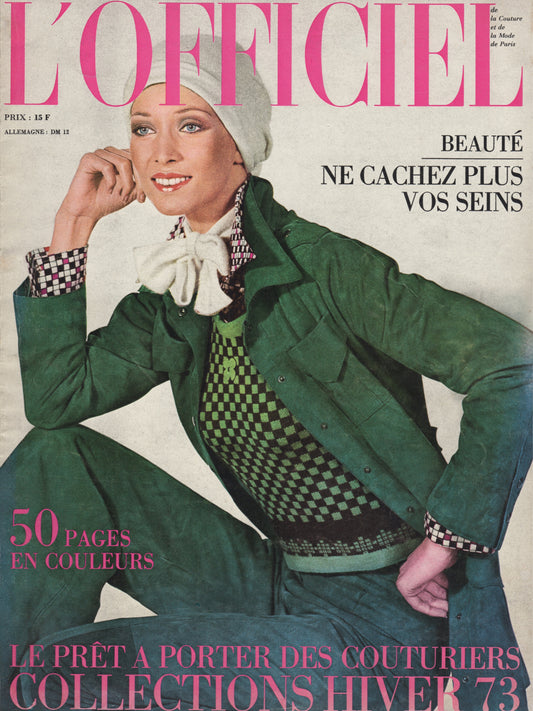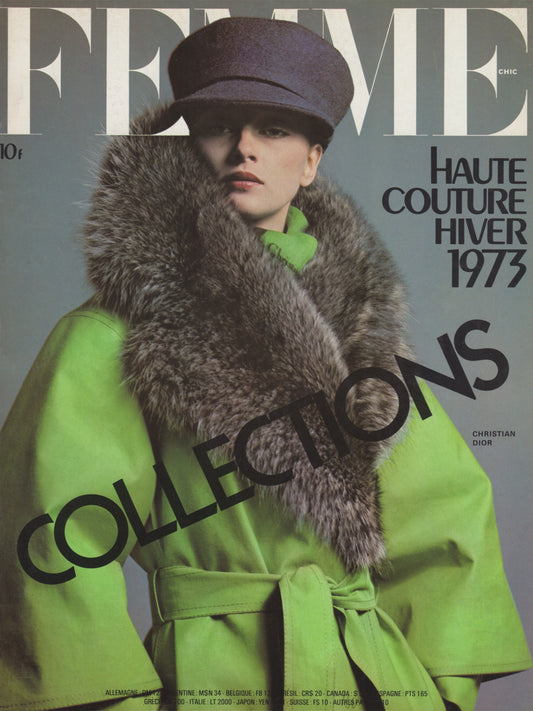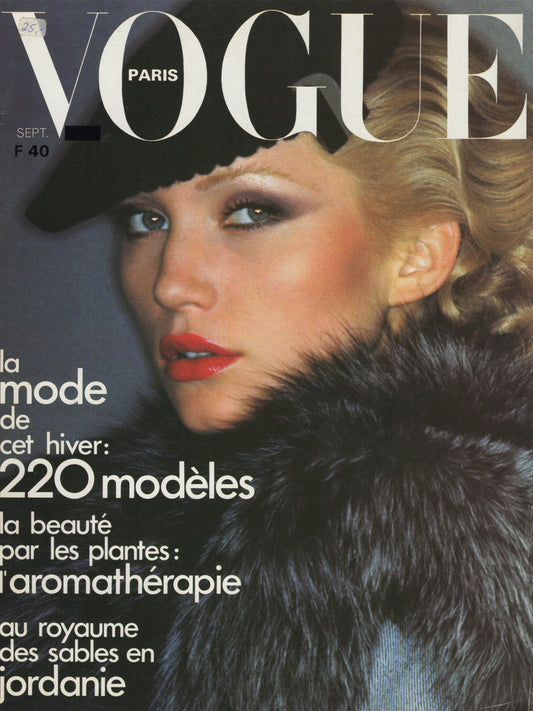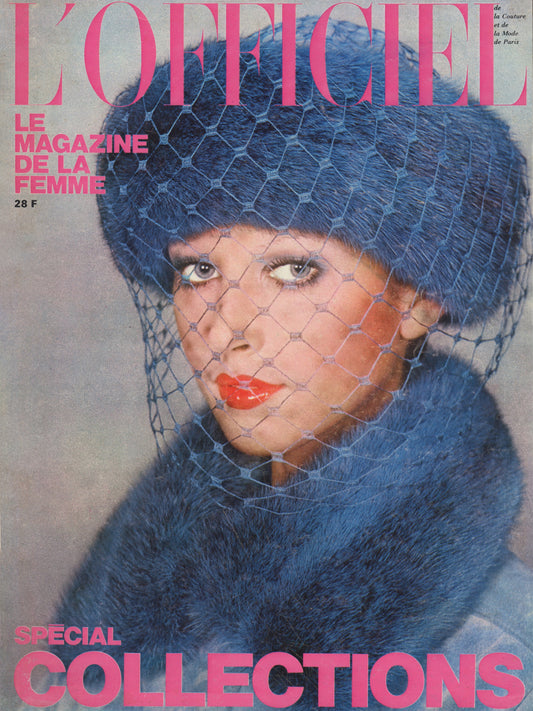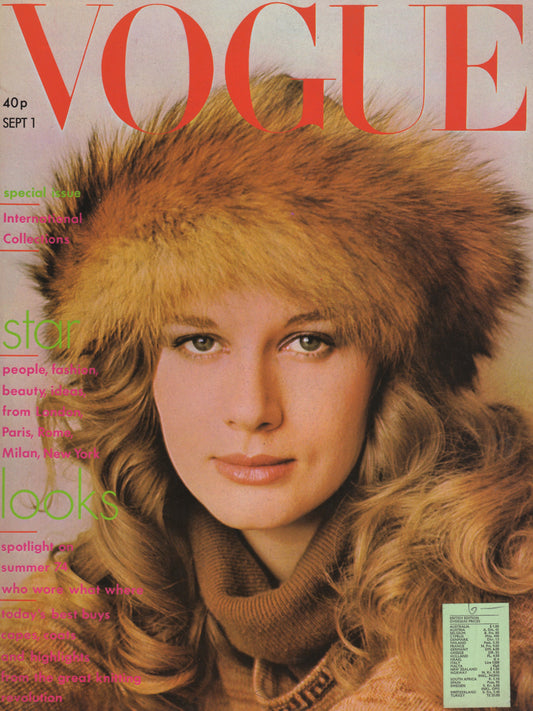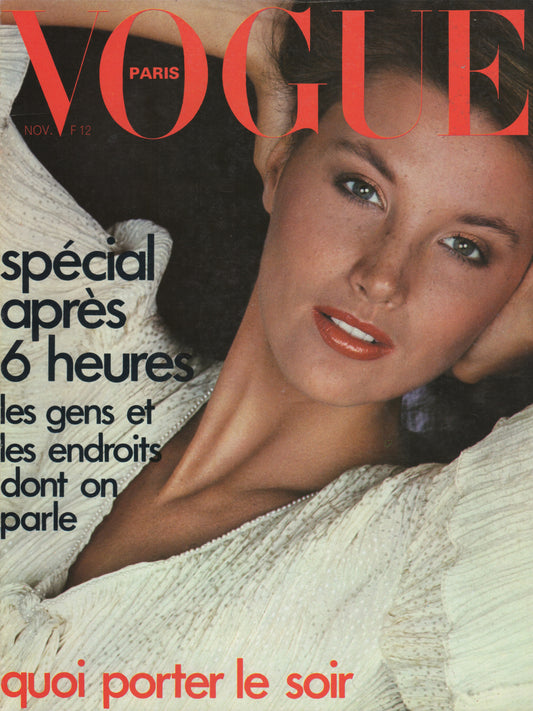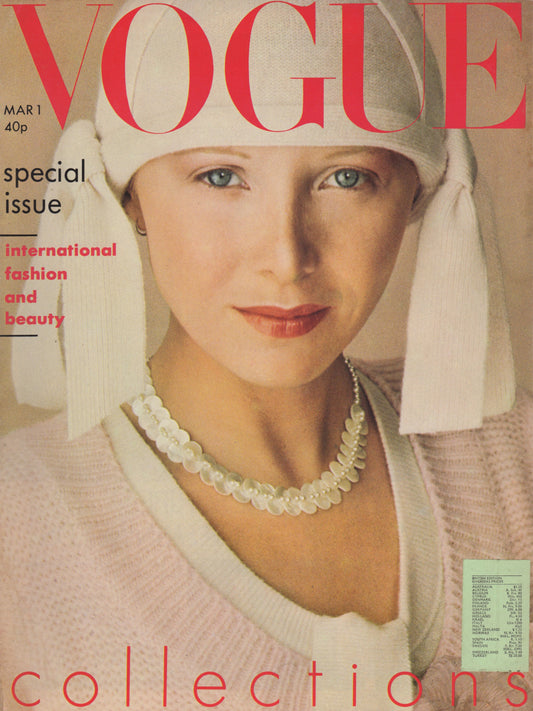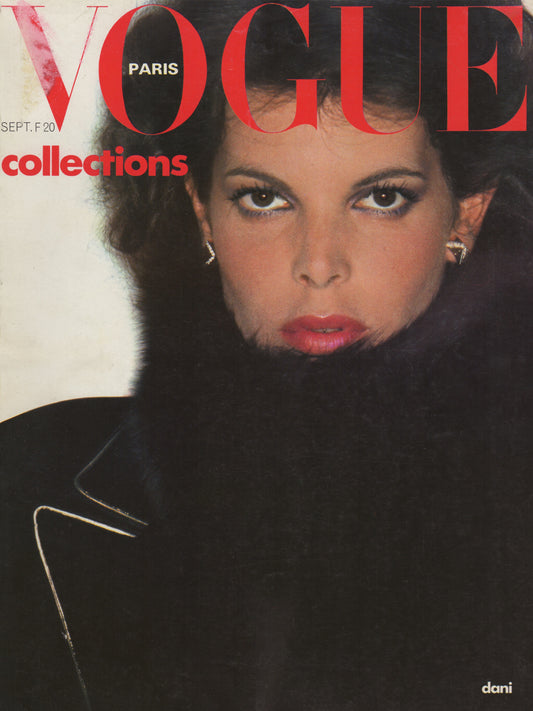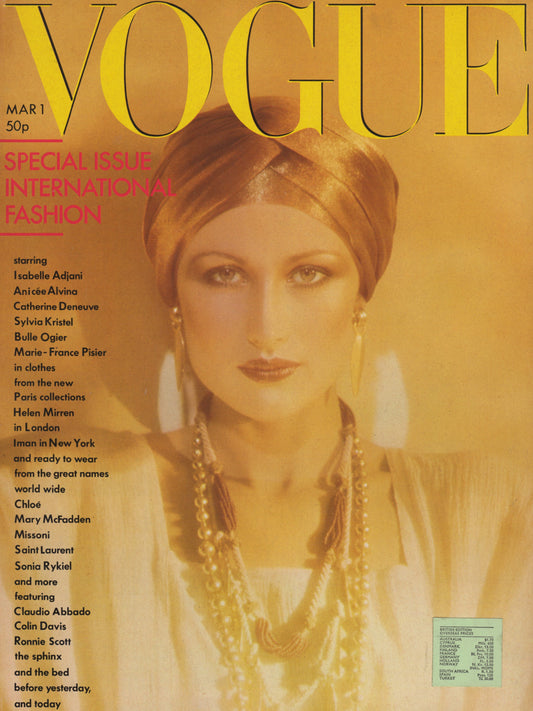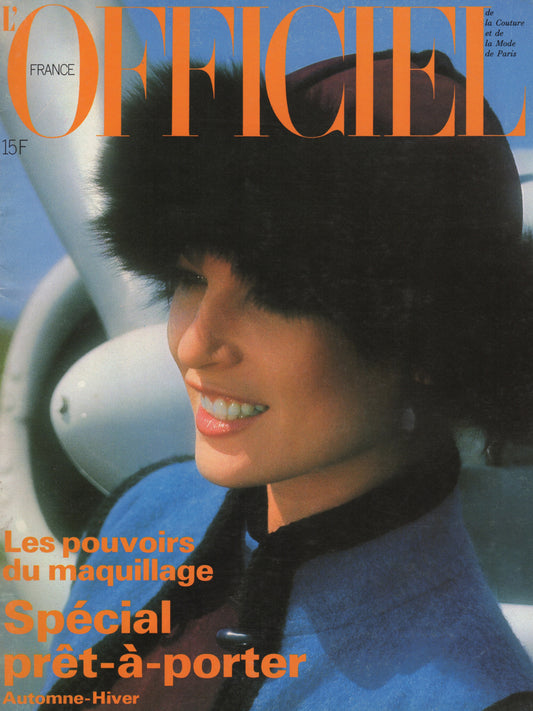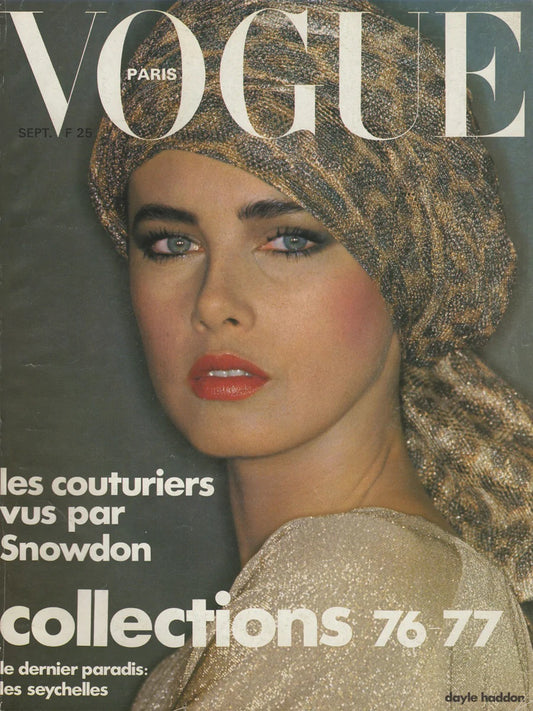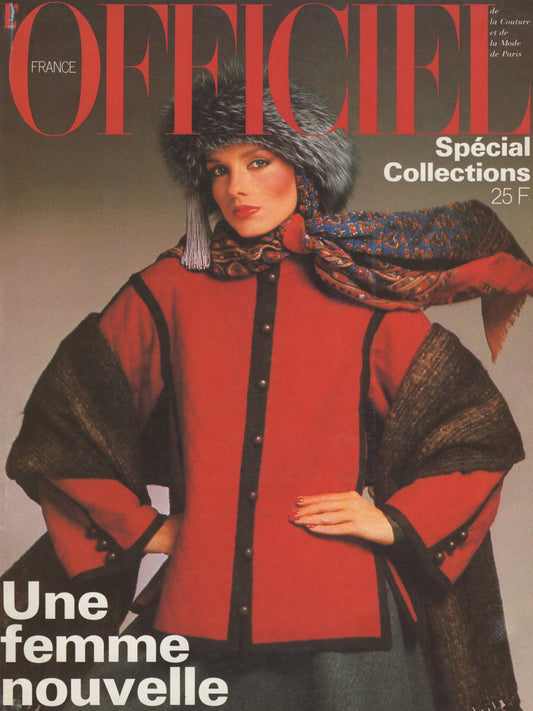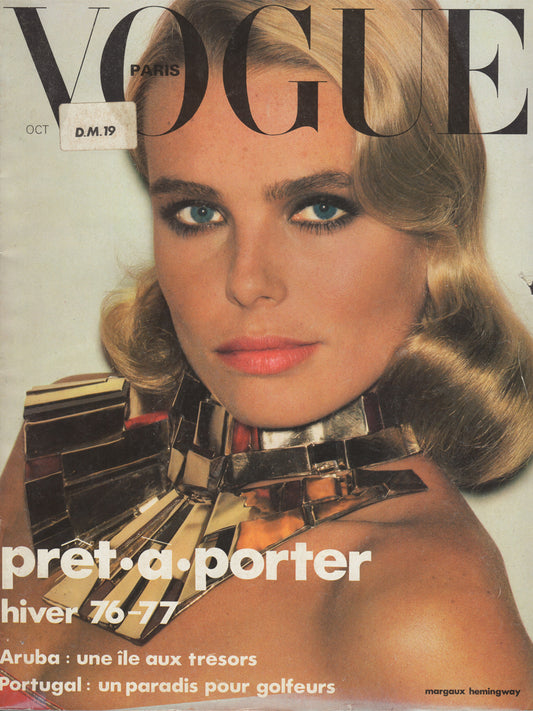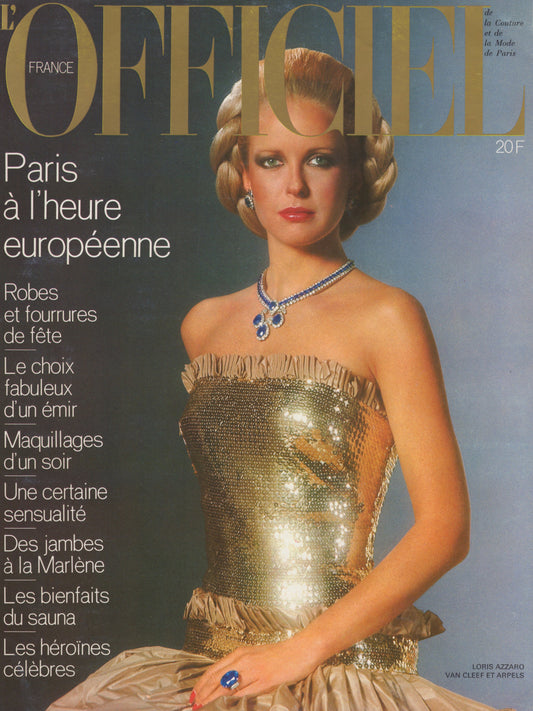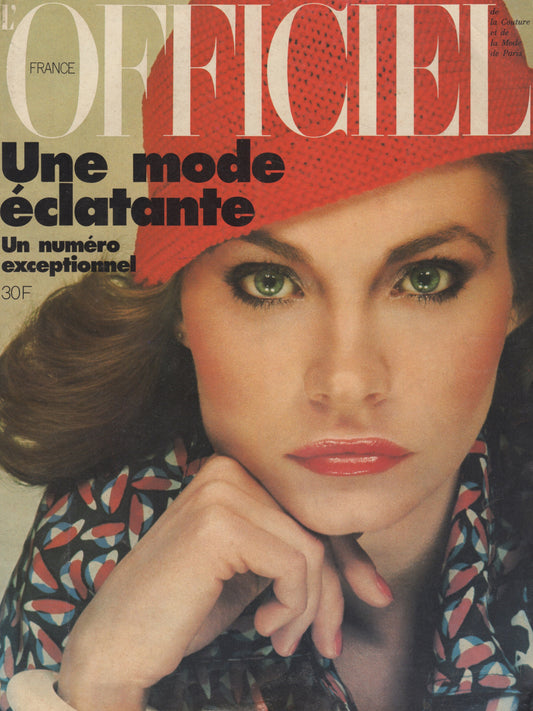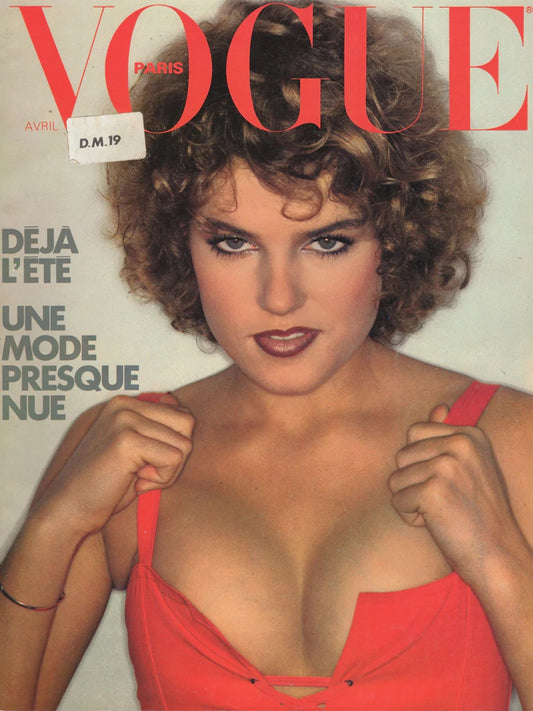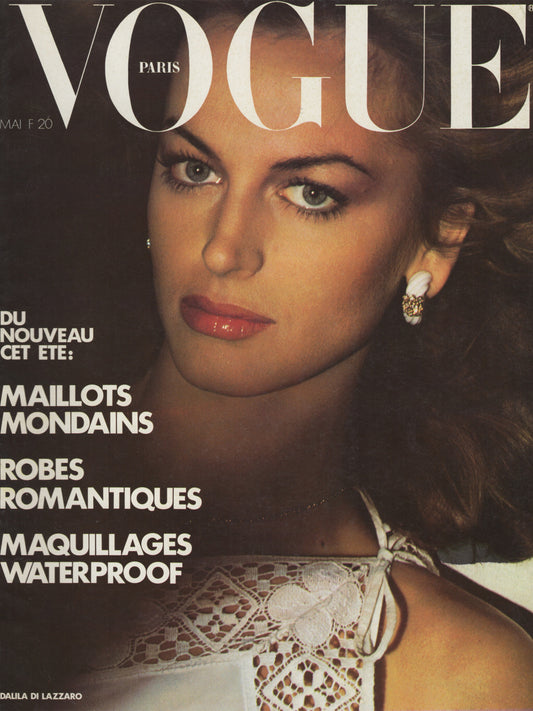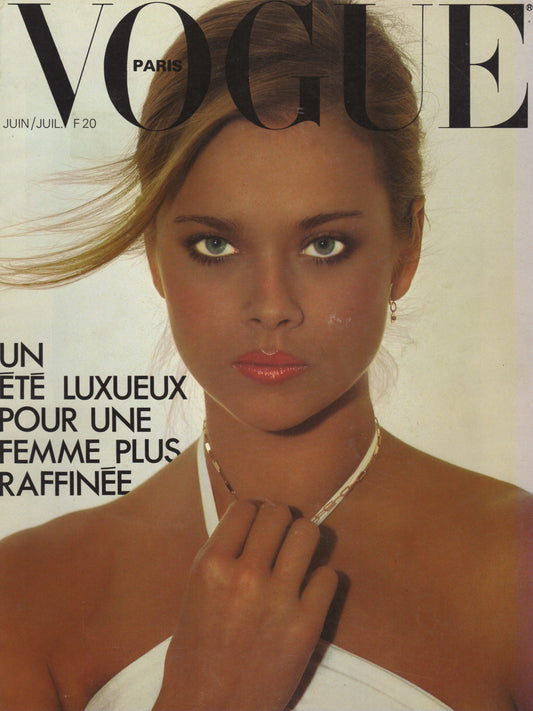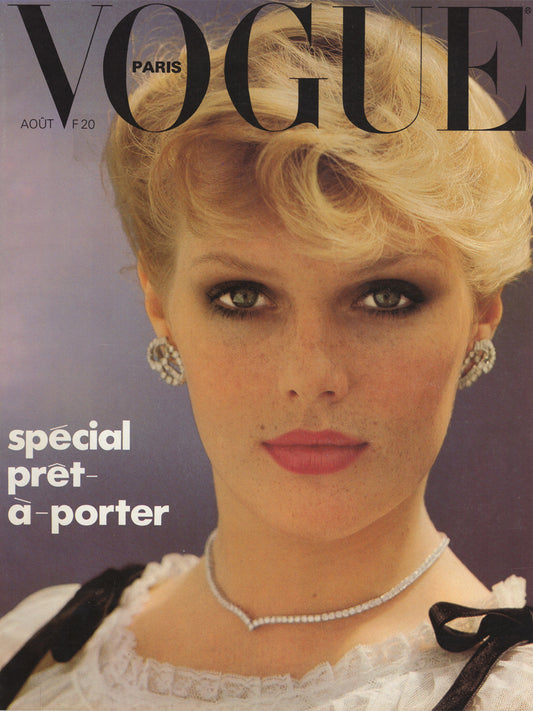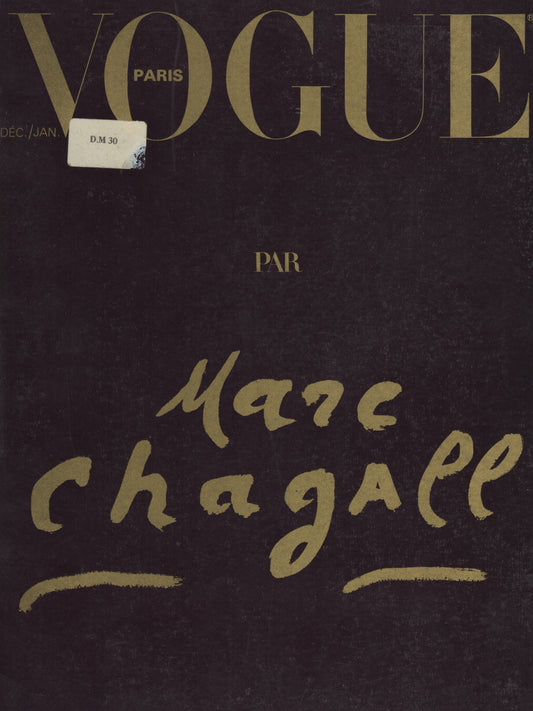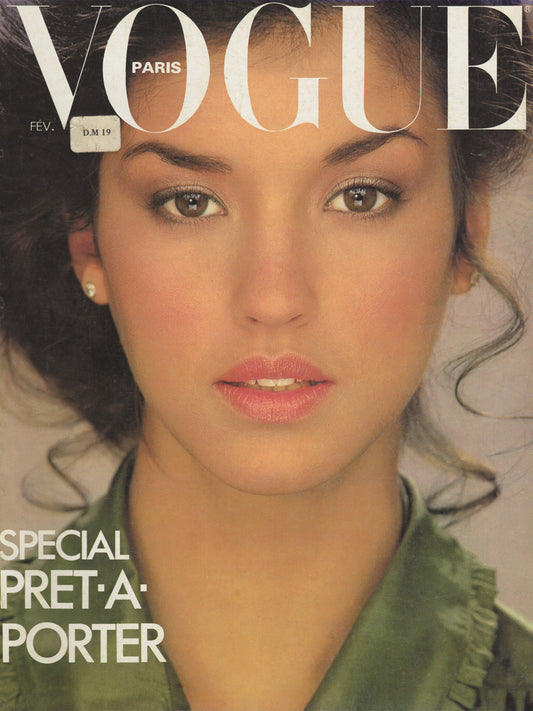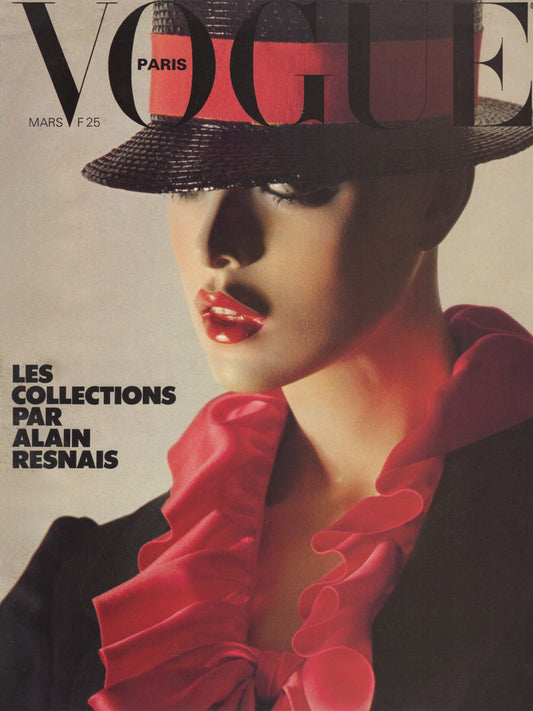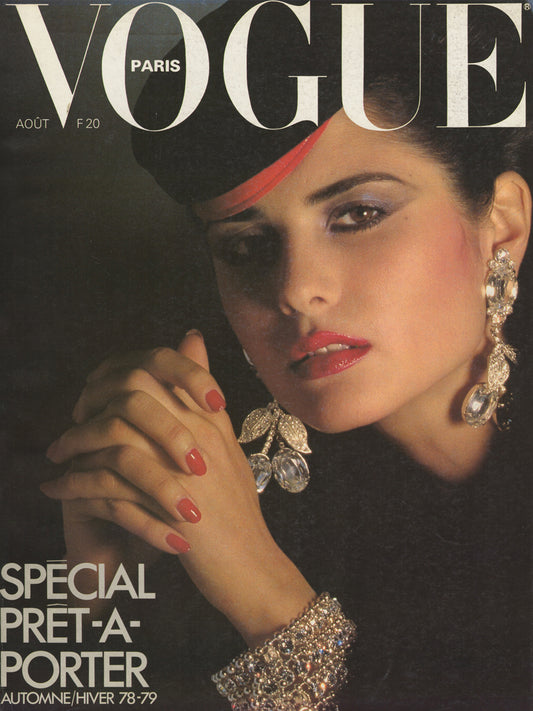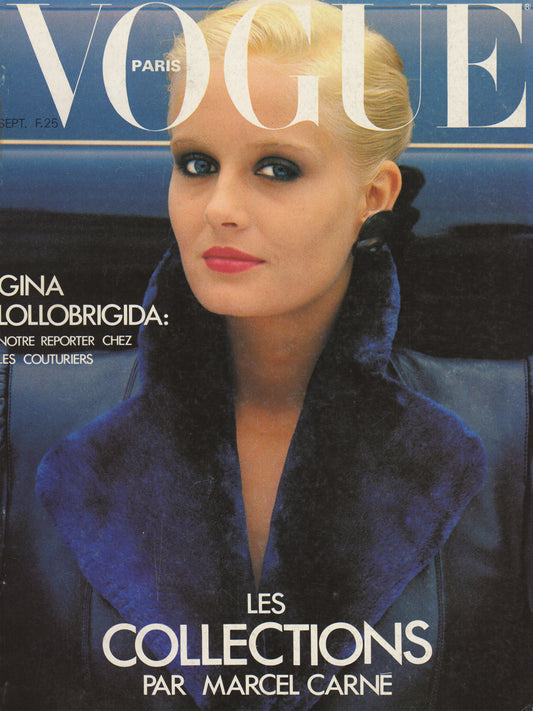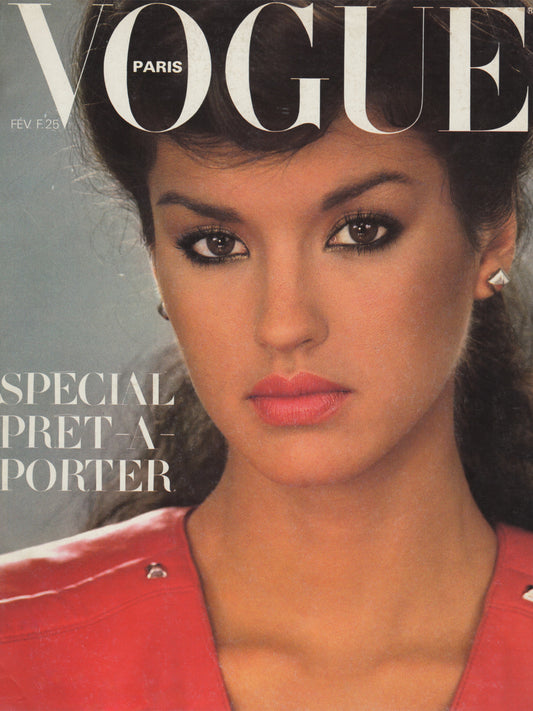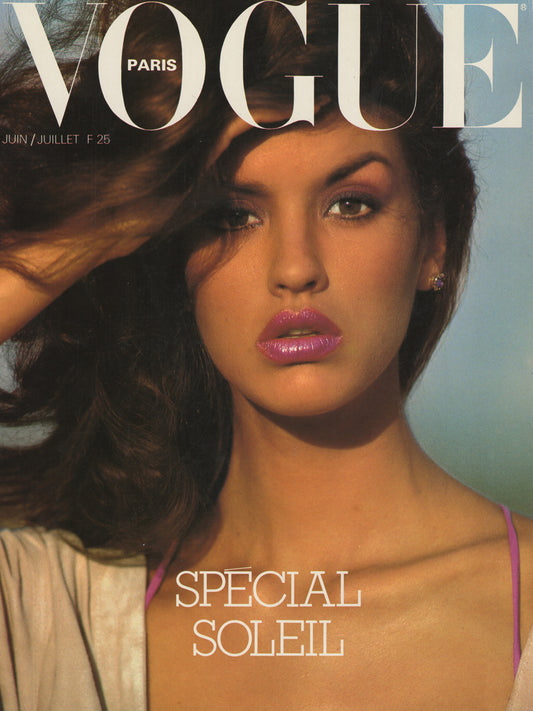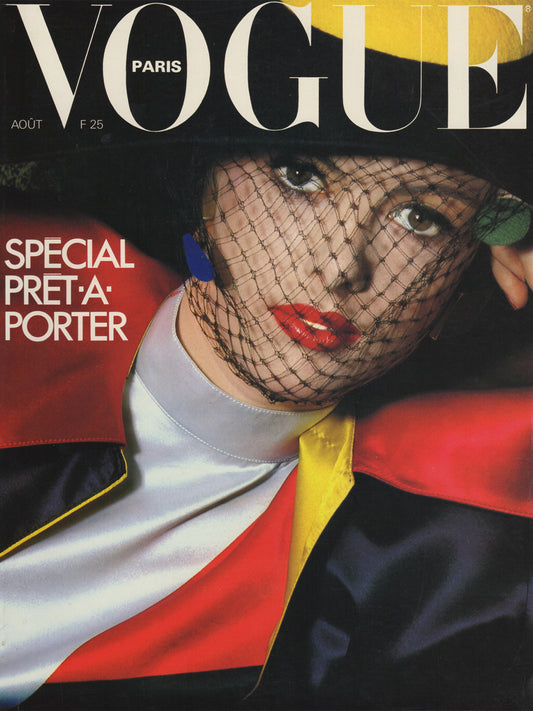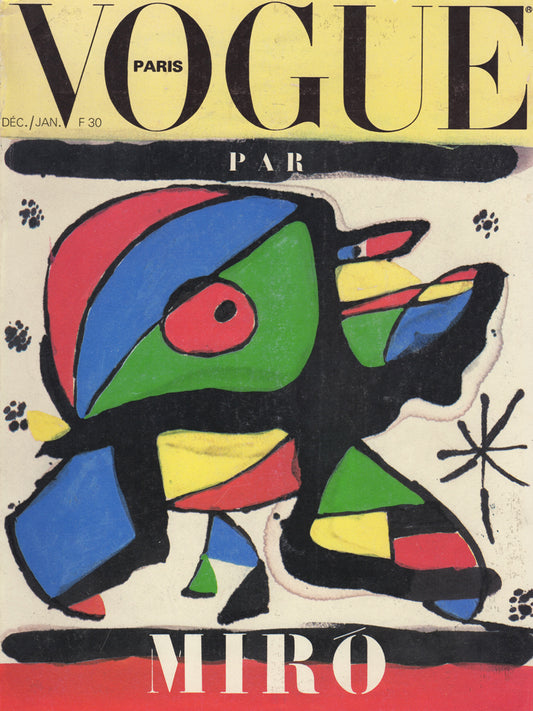Collection: FASHION MAGAZINES - 1970s
Casual Revolution, Punk Rebellion, and Disco Glam
The 1970s ushered in a transformative era in fashion, with prêt-à-porter labels gaining unprecedented popularity. Economic challenges, such as the energy crisis, global recession, high unemployment, and inflation, influenced a shift toward more practical, accessible, and everyday clothing options. This shift marked the widespread adoption of casual attire as a dominant trend.
Fashion in the 1970s was characterized by versatility and diversity. Pants became a staple, appearing in various styles and lengths, from daring hot pants to wide-flared bell bottoms. Separates, coordinates, knitwear, jersey fabrics, denim, and sportswear epitomized the decade's practical sensibilities. Amidst this casual revolution, dazzling evening wear and opulent fur pieces provided a stark contrast, embodying luxury and glamour.
By the late 1970s, fashion splintered into contrasting aesthetics. The punk movement, led by disenfranchised youth, embraced rebellious, deconstructed looks that reflected a "no future" ethos. In stark contrast, the disco craze celebrated flamboyant, glittery, and hedonistic styles worn by partygoers on the dance floor. While the first half of the decade was dominated by form-fitting designs, the latter half saw looser silhouettes come into vogue, paving the way for the bold, structured power dressing of the 1980s, marked by the rise of shoulder pads.
Beauty trends of the 1970s emphasized natural looks, with women favoring fit and healthy bodies, sun-kissed complexions, and long, flowing hair. Iconic figures like Pat Cleveland, Bianca Jagger, Jerry Hall, and Grace Jones significantly influenced the fashion scene with their distinctive styles.
The 1970s also saw the rise of influential designers who shaped the industry for decades to come. Established icons like Karl Lagerfeld, Yves Saint Laurent, Diane von Fürstenberg, and Halston left indelible marks, while new fashion empires emerged. Designers from Japan, such as Kenzo Takada, Issey Miyake, Rei Kawakubo, and Yohji Yamamoto, made groundbreaking contributions to global fashion. Italy brought forth luminaries like Roberto Cavalli, Giorgio Armani, and Gianni Versace, while American designers Ralph Lauren and Calvin Klein solidified their legacies. French designers Claude Montana, Thierry Mugler, and Jean Paul Gaultier made their first impactful moves in the industry, with Vivienne Westwood pioneering punk fashion and Sonia Rykiel revolutionizing knitwear with her chic, relaxed styles.
-
VOGUE US January 15, 1970
Regular price 160 €Regular price -
VOGUE US February 1, 1970
Regular price 180 €Regular price -
VOGUE US February 15, 1970
Regular price 300 €Regular price -
LINEA ITALIANA Spring 1970
Regular price 220 €Regular price -
L'OFFICIEL PARIS March 1970
Regular price 325 €Regular price -
HARPER'S BAZAAR US March 1970
Regular price 180 €Regular price -
VOGUE US March 15, 1970
Regular price 180 €Regular price -
L'OFFICIEL PARIS April 1970
Regular price 195 €Regular price -
HARPER'S BAZAAR US April 1970
Regular price 180 €Regular price -
VOGUE US May 1970
Regular price 180 €Regular price -
VOGUE PARIS May 1970
Regular price 250 €Regular price -
L'OFFICIEL PARIS June 1970
Regular price 250 €Regular price -
HARPER'S BAZAAR US June 1970
Regular price 160 €Regular price -
VOGUE PARIS June/July 1970
Regular price 180 €Regular price -
HARPER'S BAZAAR US August 1970
Regular price 155 €Regular price -
VOGUE US August 1, 1970
Regular price 180 €Regular price -
HARPER'S BAZAAR US September 1970
Regular price 200 €Regular price -
VOGUE ITALIA September 1970
Regular price 310 €Regular price -
VOGUE US September 1, 1970
Regular price 180 €Regular price -
VOGUE US September 15, 1970
Regular price 180 €Regular price -
HARPER'S BAZAAR US October 1970
Regular price 200 €Regular price -
VOGUE US October 1, 1970
Regular price 180 €Regular price -
VOGUE US October 15, 1970
Regular price 140 €Regular price -
VOGUE US November 1, 1970
Regular price 270 €Regular price -
VOGUE US January 15, 1971
Regular price 120 €Regular price -
British VOGUE UK February 1971
Regular price 100 €Regular price -
VOGUE US February 1, 1971
Regular price 140 €Regular price -
VOGUE US February 15, 1971
Regular price 150 €Regular price -
HARPER'S BAZAAR US March 1971
Regular price 120 €Regular price -
VOGUE ITALIA March 1971
Regular price 400 €Regular price -
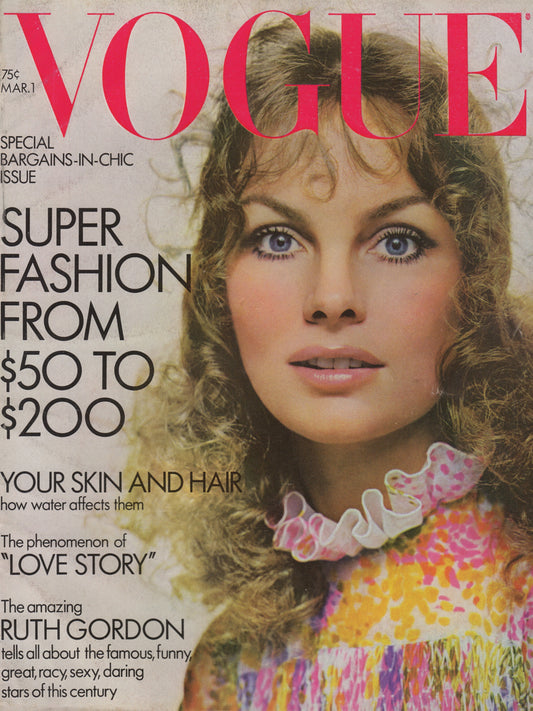 Sold out
Sold outVOGUE US March 1, 1971
Regular price 250 €Regular price -
VOGUE US March 15, 1971
Regular price 250 €Regular price -
VOGUE US April 1, 1971
Regular price 140 €Regular price -
British VOGUE UK April 1, 1971
Regular price 195 €Regular price -
VOGUE US May 1971
Regular price 100 €Regular price -
VOGUE ITALIA May 1971
Regular price 190 €Regular price -
VOGUE US July 1971
Regular price 120 €Regular price -
HARPER'S BAZAAR US August 1971
Regular price 90 €Regular price -
VOGUE PARIS September 1971
Regular price 250 €Regular price -
VOGUE US September 1, 1971
Regular price 150 €Regular price -
HARPER'S BAZAAR US September 1971
Regular price 120 €Regular price -
VOGUE US October 1, 1971
Regular price 120 €Regular price -
HARPER'S BAZAAR US December 1971
Regular price 210 €Regular price -
VOGUE Paris December 1971/January 1972
Regular price 475 €Regular price -
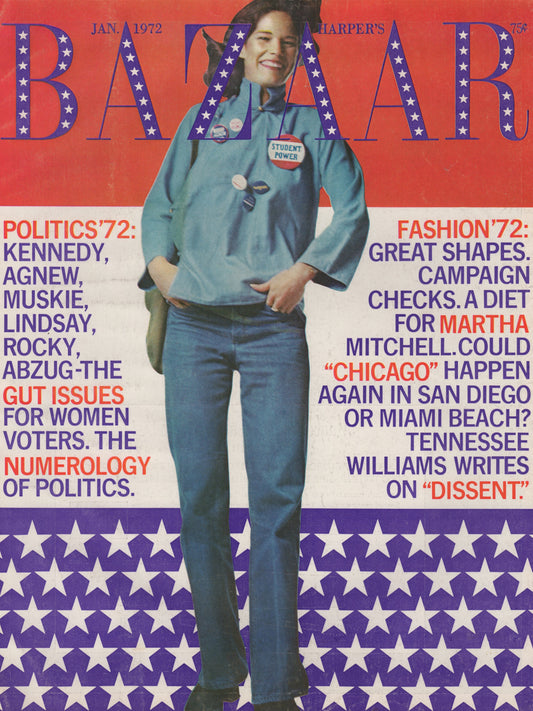 Sold out
Sold outHARPER'S BAZAAR US January 1972
Regular price 135 €Regular price -
VOGUE PARIS February 1972
Regular price 270 €Regular price -
L'OFFICIEL PARIS March 1972
Regular price 300 €Regular price -
L'OFFICIEL PARIS April 1972
Regular price 165 €Regular price -
VOGUE US April 15, 1972
Regular price 150 €Regular price -
British VOGUE UK May 1972
Regular price 150 €Regular price -
L'OFFICIEL PARIS May 1972
Regular price 200 €Regular price -
VOGUE ITALIA June 1972
Regular price 225 €Regular price -
VOGUE PARIS August 1972
Regular price 125 €Regular price -
VOGUE ITALIA September 1972
Regular price 300 €Regular price -
VOGUE US September 1, 1972
Regular price 180 €Regular price -
VOGUE PARIS September 1972
Regular price 250 €Regular price -
British VOGUE UK October 1, 1972
Regular price 100 €Regular price -
British VOGUE UK November 1972
Regular price 100 €Regular price -
L'OFFICIEL PARIS Spring/Summer 1973
Regular price 150 €Regular price -
VOGUE PARIS March 1973
Regular price 225 €Regular price -
British VOGUE UK March 1, 1973
Regular price 180 €Regular price -
British VOGUE UK April 1, 1973
Regular price 100 €Regular price -
British VOGUE UK May 1973
Regular price 100 €Regular price -
L'OFFICIEL PARIS Fall/Winter 1973
Regular price 250 €Regular price -
FEMME CHIC Winter 1973
Regular price 220 €Regular price -
VOGUE PARIS September 1974
Regular price 200 €Regular price -
L'OFFICIEL PARIS September 1974
Regular price 275 €Regular price -
British VOGUE UK September 1, 1974
Regular price 125 €Regular price -
VOGUE PARIS November 1974
Regular price 200 €Regular price -
VOGUE UK March 1, 1975
Regular price 125 €Regular price -
VOGUE PARIS September 1975
Regular price 340 €Regular price -
VOGUE UK March 1, 1976
Regular price 145 €Regular price -
L'OFFICIEL PARIS August 1976
Regular price 200 €Regular price -
VOGUE PARIS September 1976
Regular price 350 €Regular price -
L'OFFICIEL PARIS September 1976
Regular price 350 €Regular price -
VOGUE PARIS October 1976
Regular price 115 €Regular price -
L'OFFICIEL PARIS December 1976
Regular price 350 €Regular price -
L'OFFICIEL PARIS March 1977
Regular price 275 €Regular price -
VOGUE PARIS April 1977
Regular price 250 €Regular price -
VOGUE PARIS May 1977
Regular price 200 €Regular price -
VOGUE PARIS June/July 1977
Regular price 250 €Regular price -
VOGUE PARIS August 1977
Regular price 160 €Regular price -
VOGUE PARIS December 1977/January 1978
Regular price 375 €Regular price -
VOGUE PARIS February 1978
Regular price 250 €Regular price -
VOGUE PARIS March 1978
Regular price 250 €Regular price -
VOGUE PARIS August 1978
Regular price 150 €Regular price -
VOGUE PARIS September 1978
Regular price 270 €Regular price -
VOGUE PARIS February 1979
Regular price 250 €Regular price -
VOGUE PARIS June/July 1979
Regular price 300 €Regular price -
VOGUE PARIS August 1979
Regular price 200 €Regular price -
VOGUE PARIS December 1979/January 1980
Regular price 240 €Regular price -
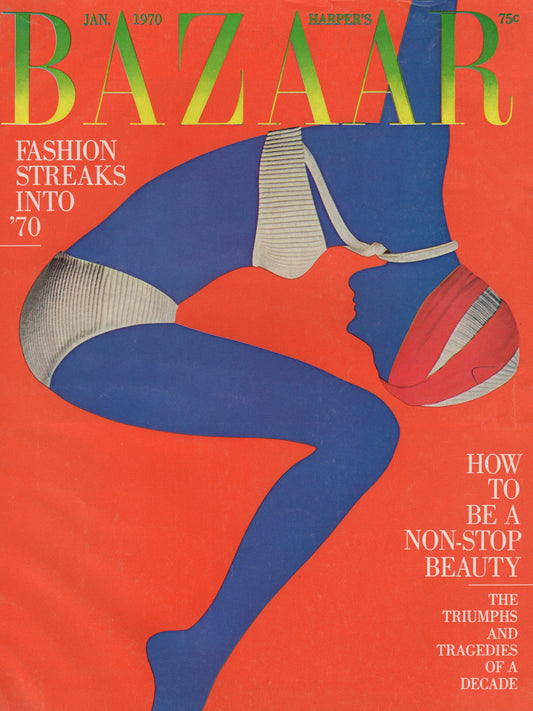 Sold out
Sold outHARPER'S BAZAAR US January 1970
Regular price 270 €Regular price -
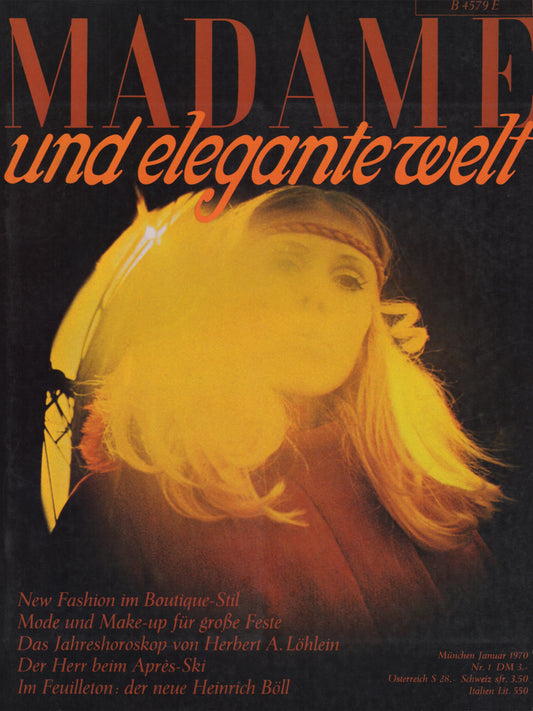 Sold out
Sold outMADAME GERMANY January 1970
Regular price 0 €Regular price -
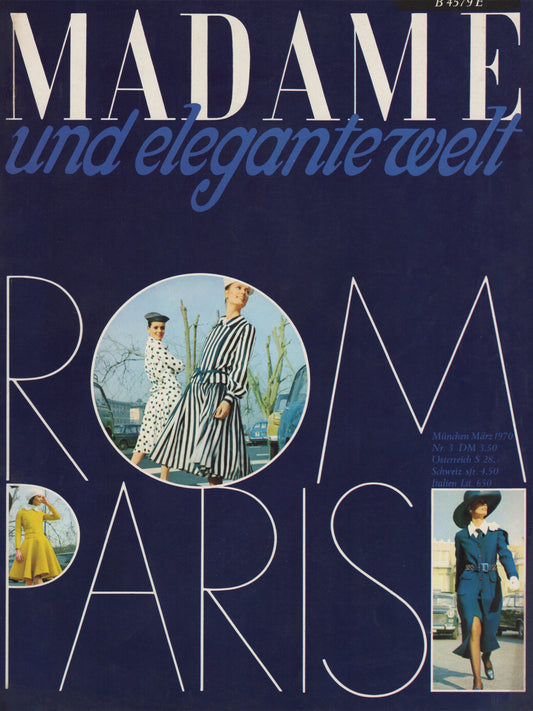 Sold out
Sold outMADAME GERMANY March 1970
Regular price 0 €Regular price -
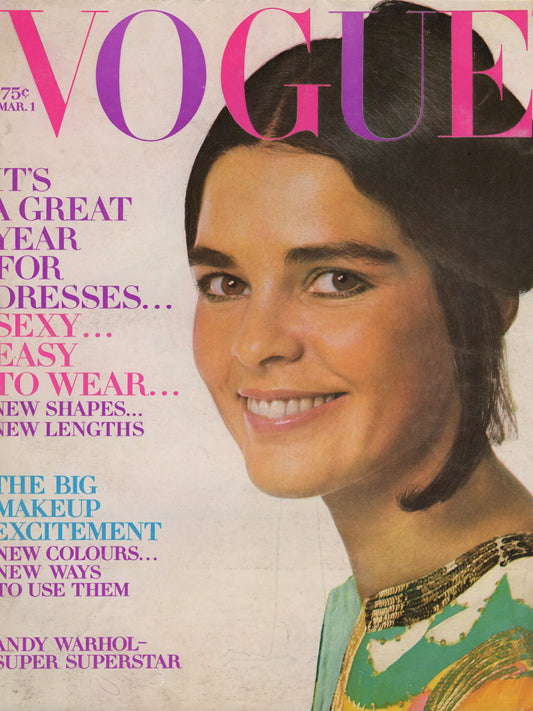 Sold out
Sold outVOGUE US March 1, 1970
Regular price 200 €Regular price -
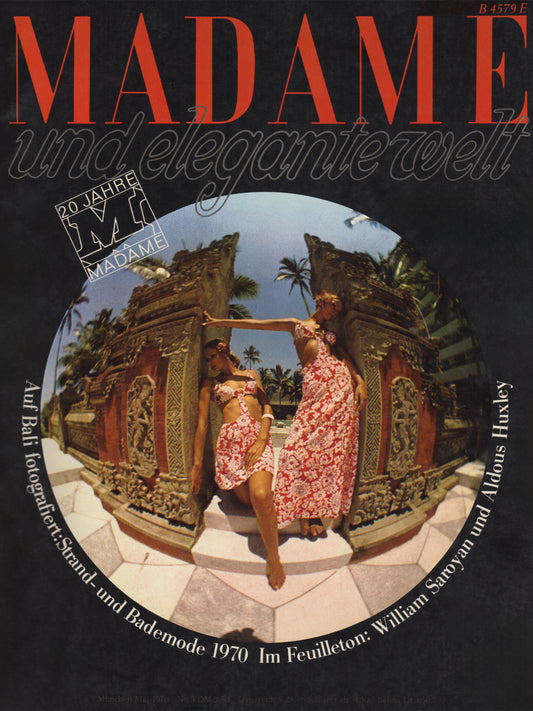 Sold out
Sold outMADAME GERMANY May 1970
Regular price 0 €Regular price -
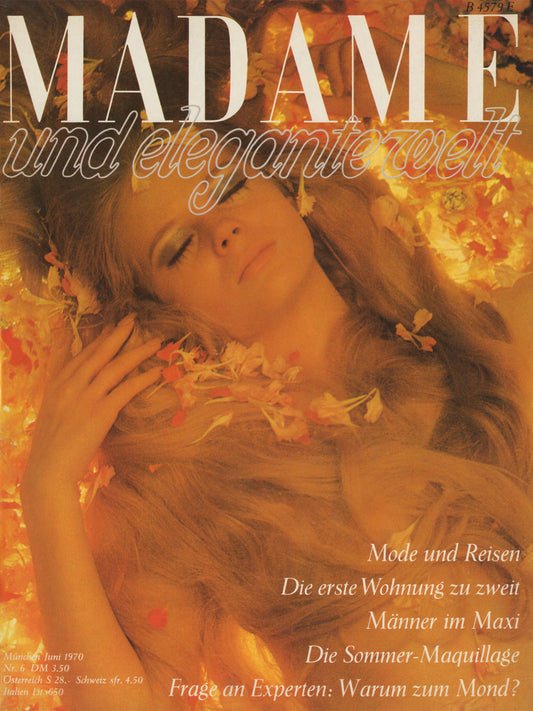 Sold out
Sold outELEGANTE WELT June 1970
Regular price 0 €Regular price -
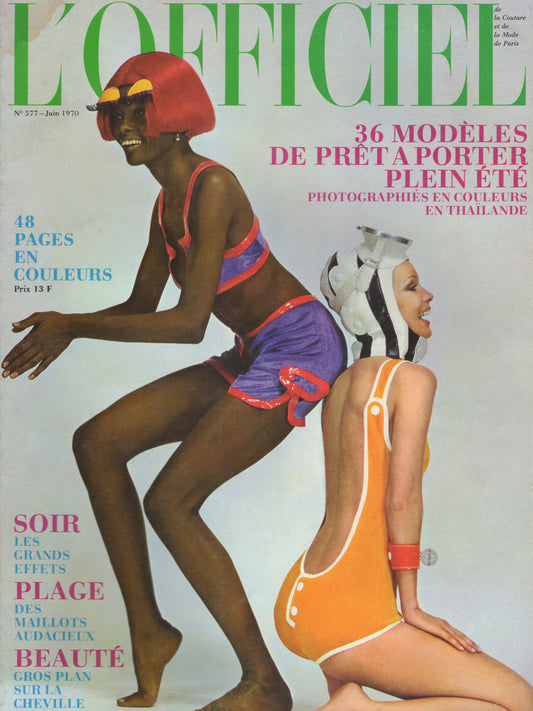 Sold out
Sold outL'OFFICIEL PARIS June 1970
Regular price 0 €Regular price -
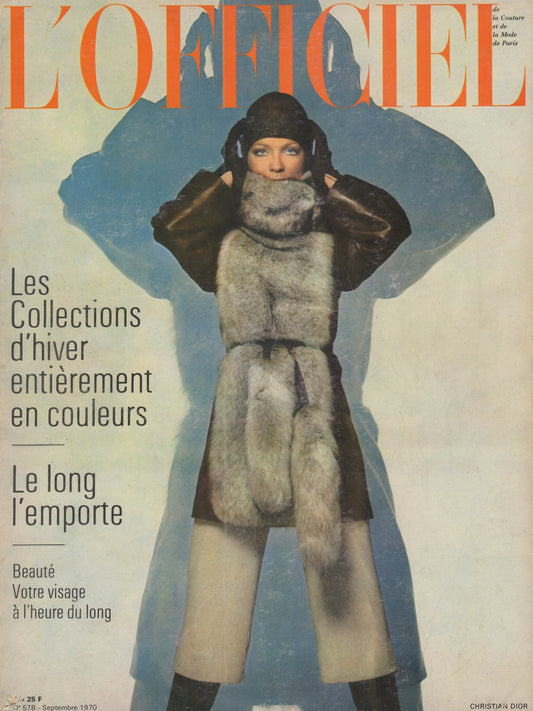 Sold out
Sold outL'OFFICIEL PARIS September 1970
Regular price 0 €Regular price -
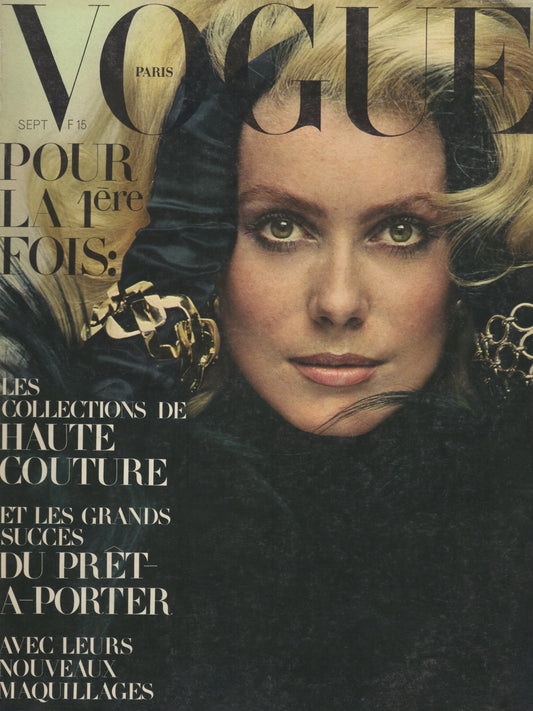 Sold out
Sold outVOGUE PARIS September 1970
Regular price 0 €Regular price
Dive Into the Fashion Milestones of the 1970s and Discover How Each Year Shaped the Couture World. Click to Explore!
The 1970s Fashion Chronicles: Discover the Year's Major Trends and Designers
